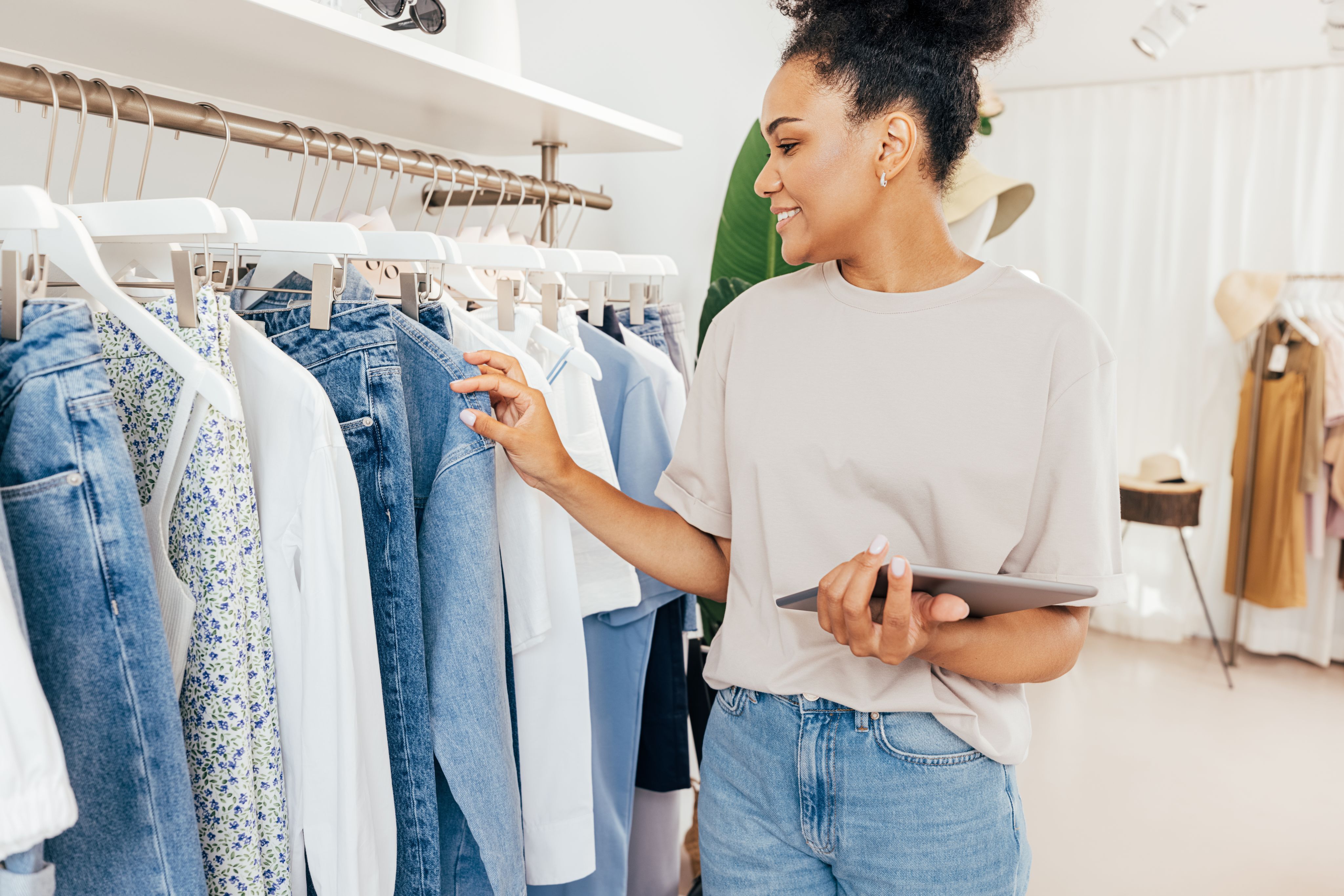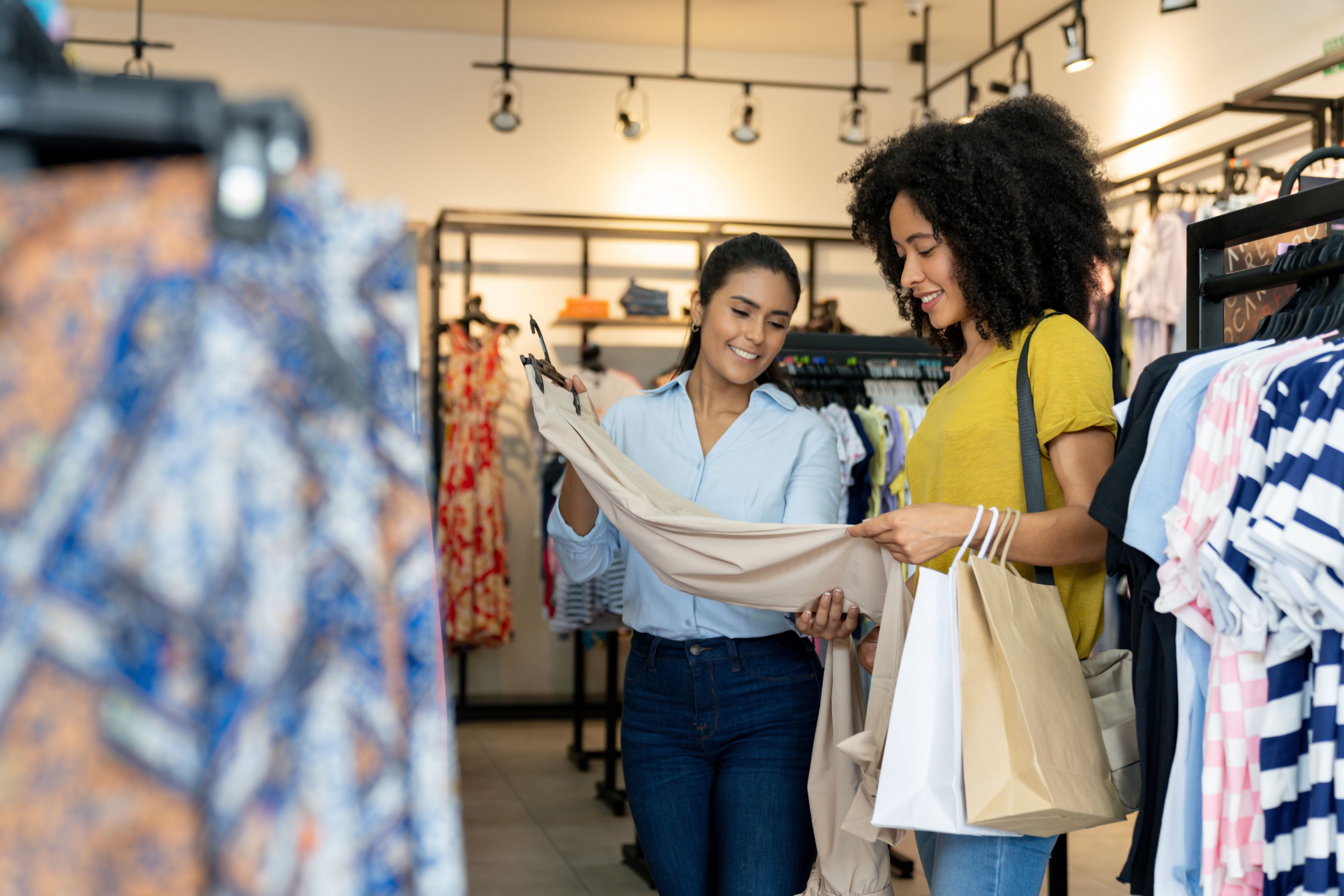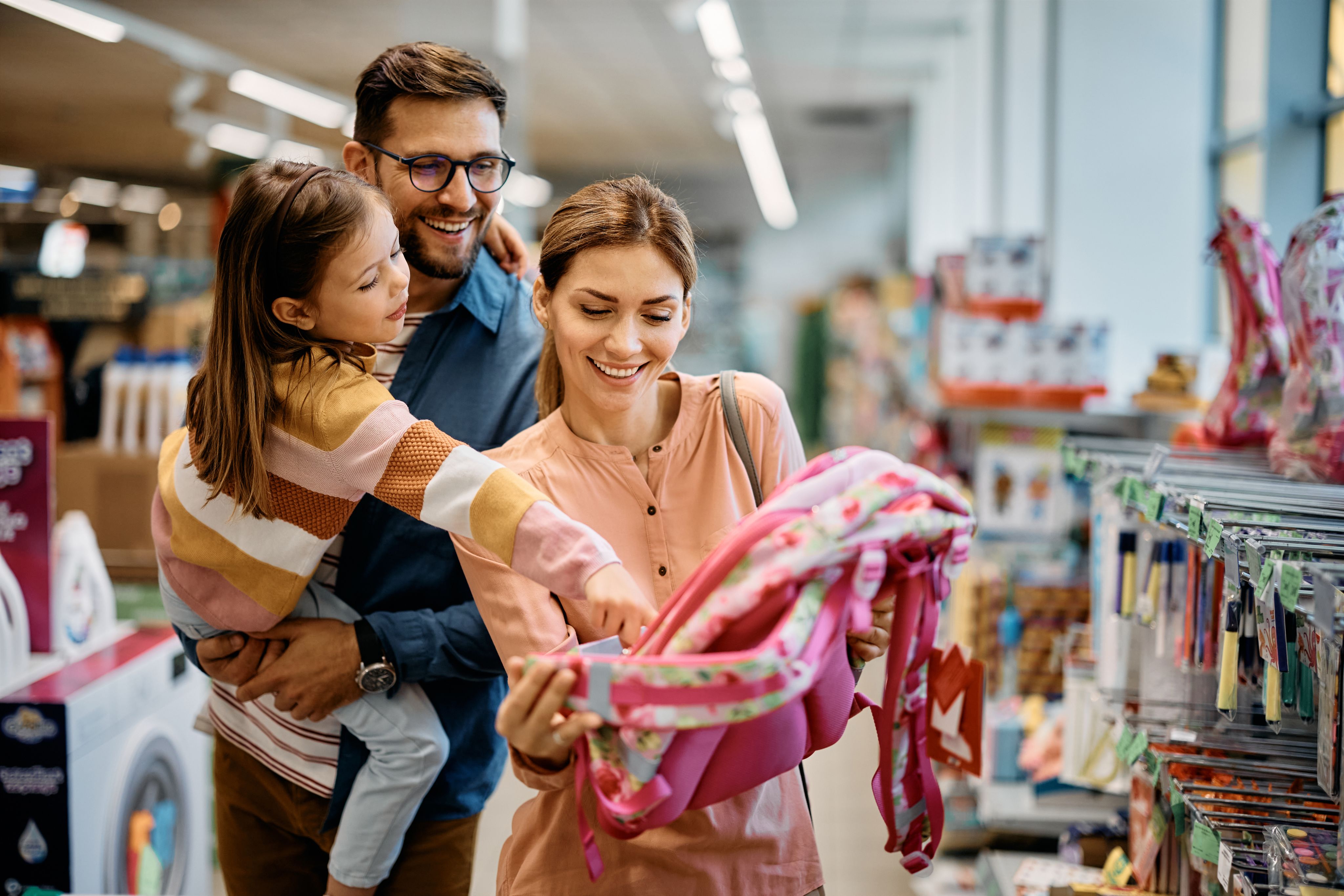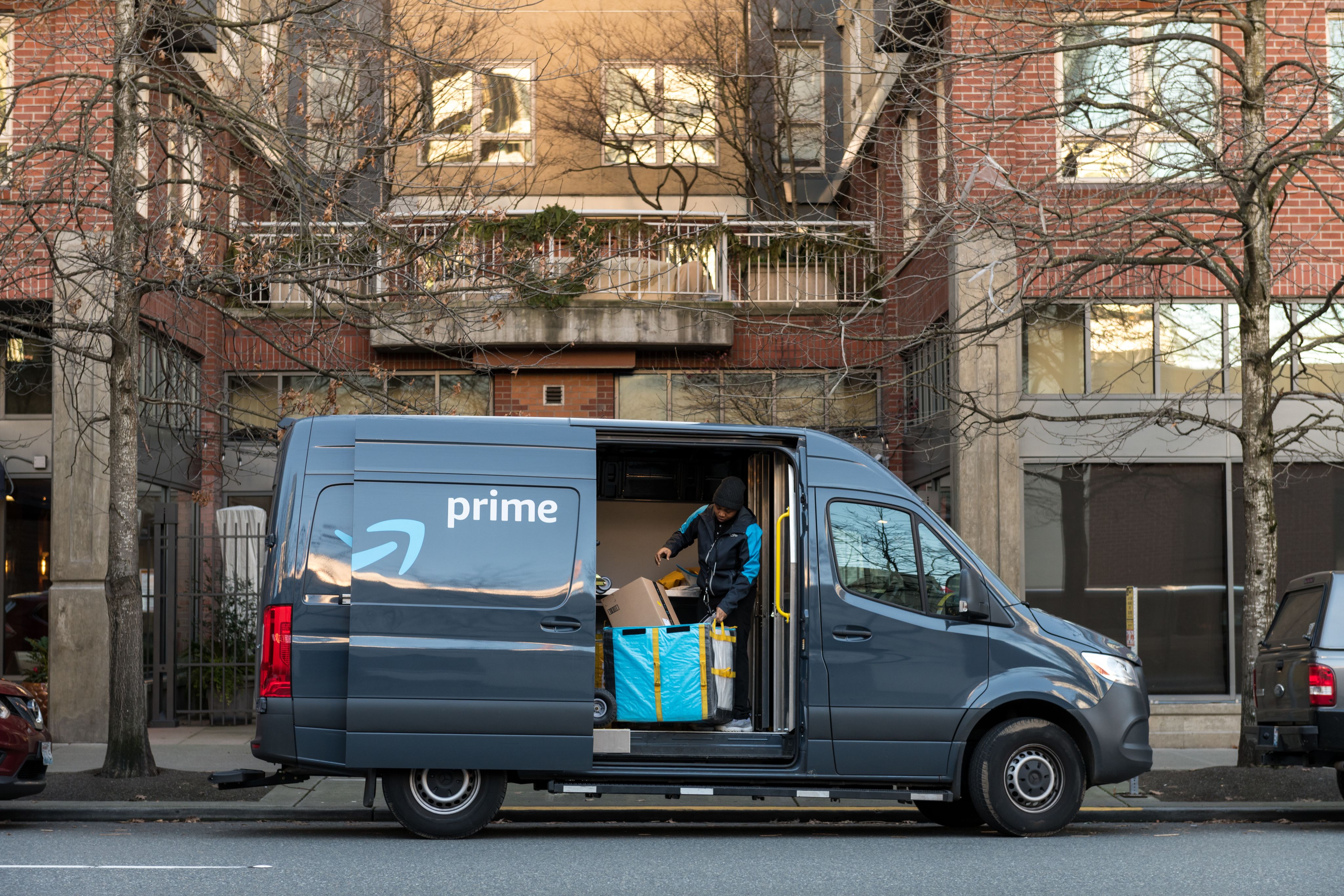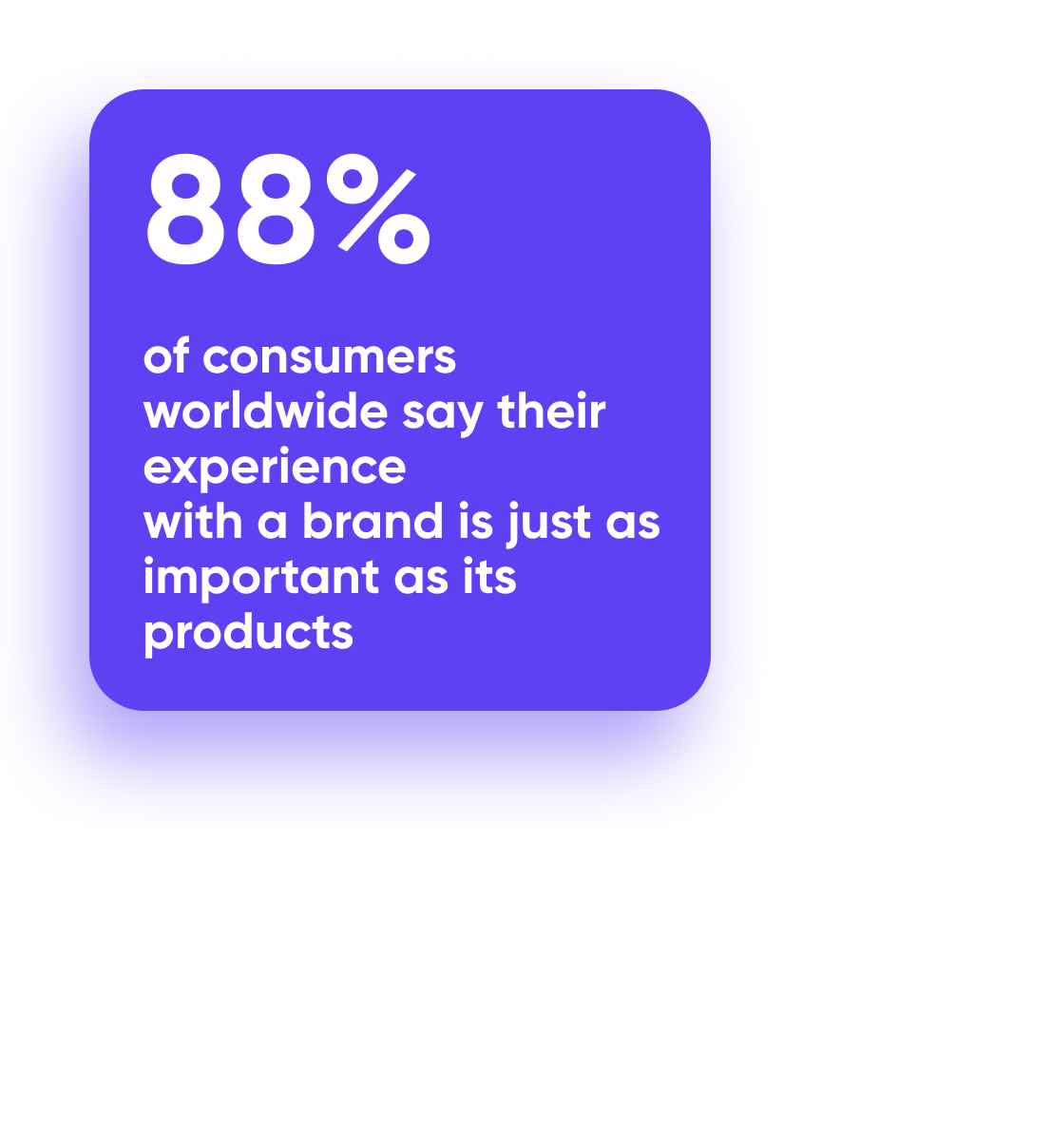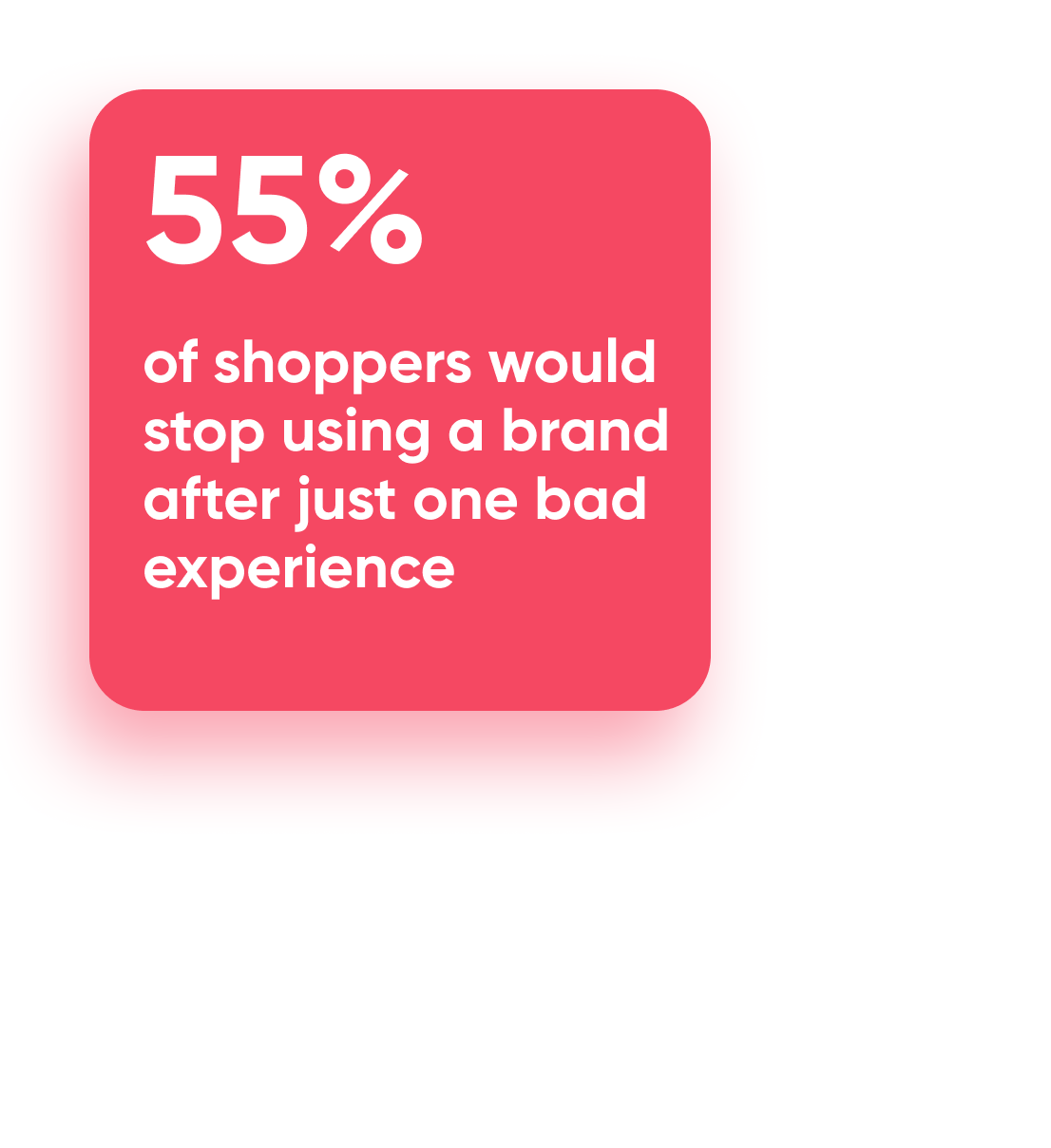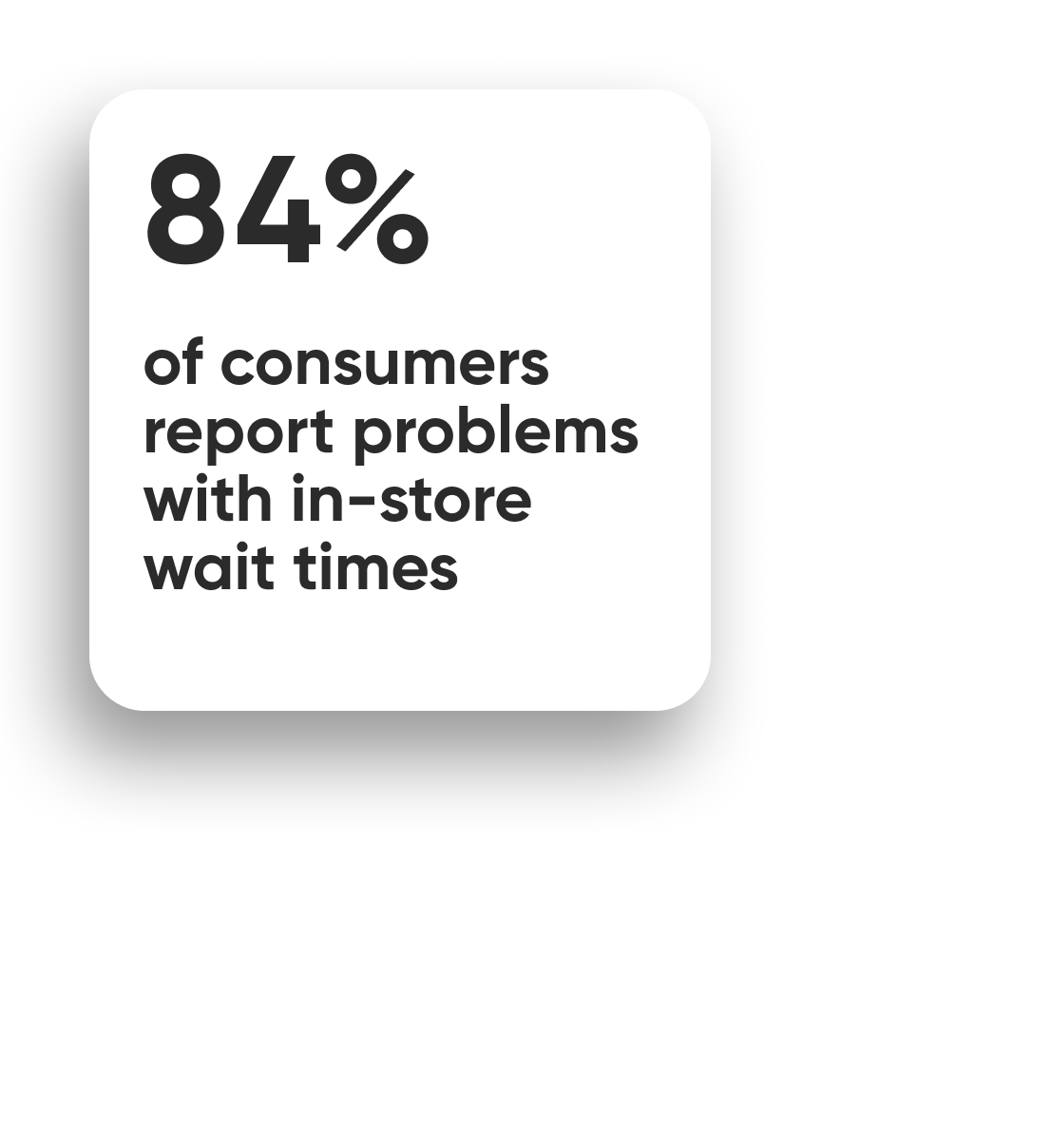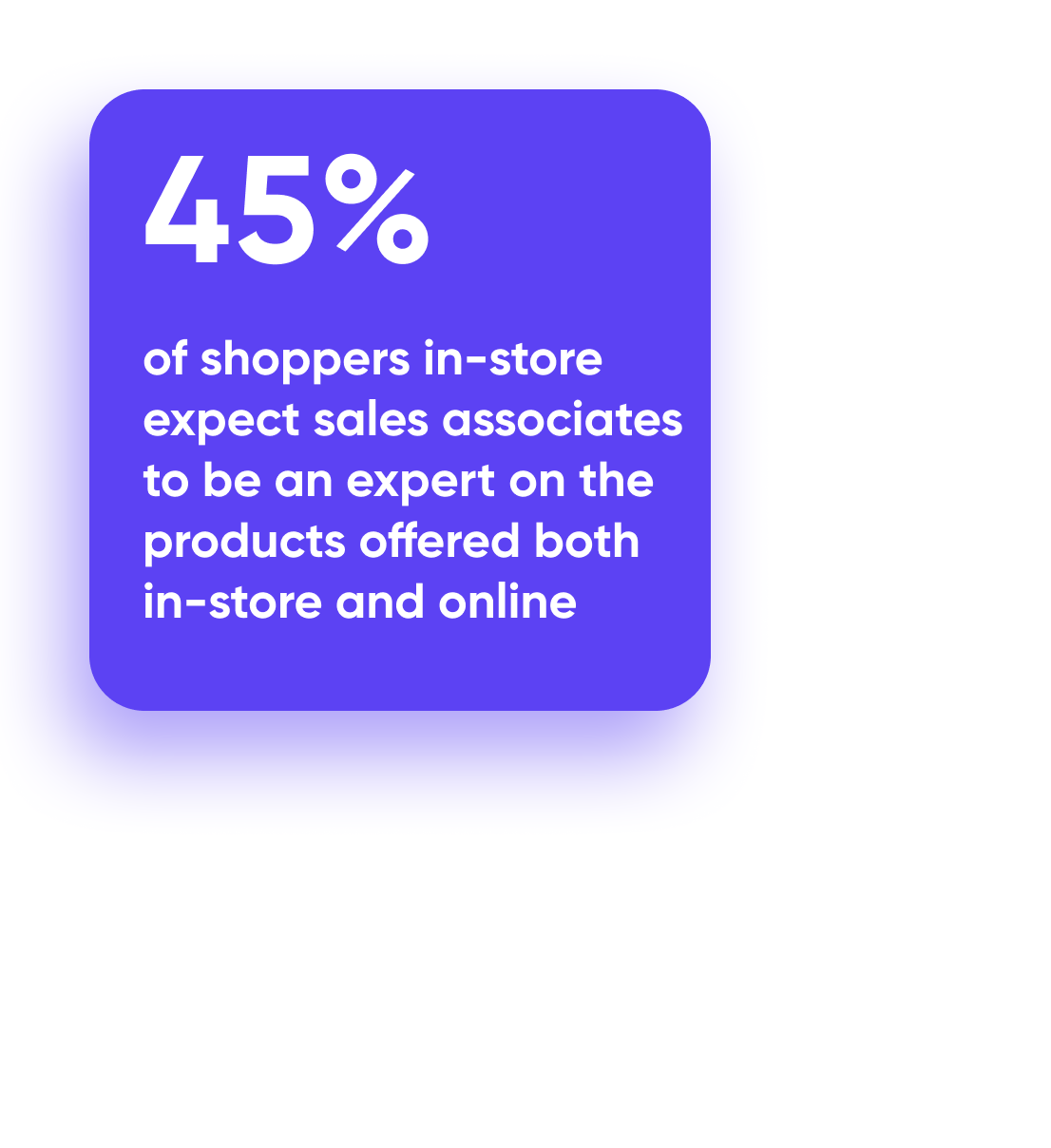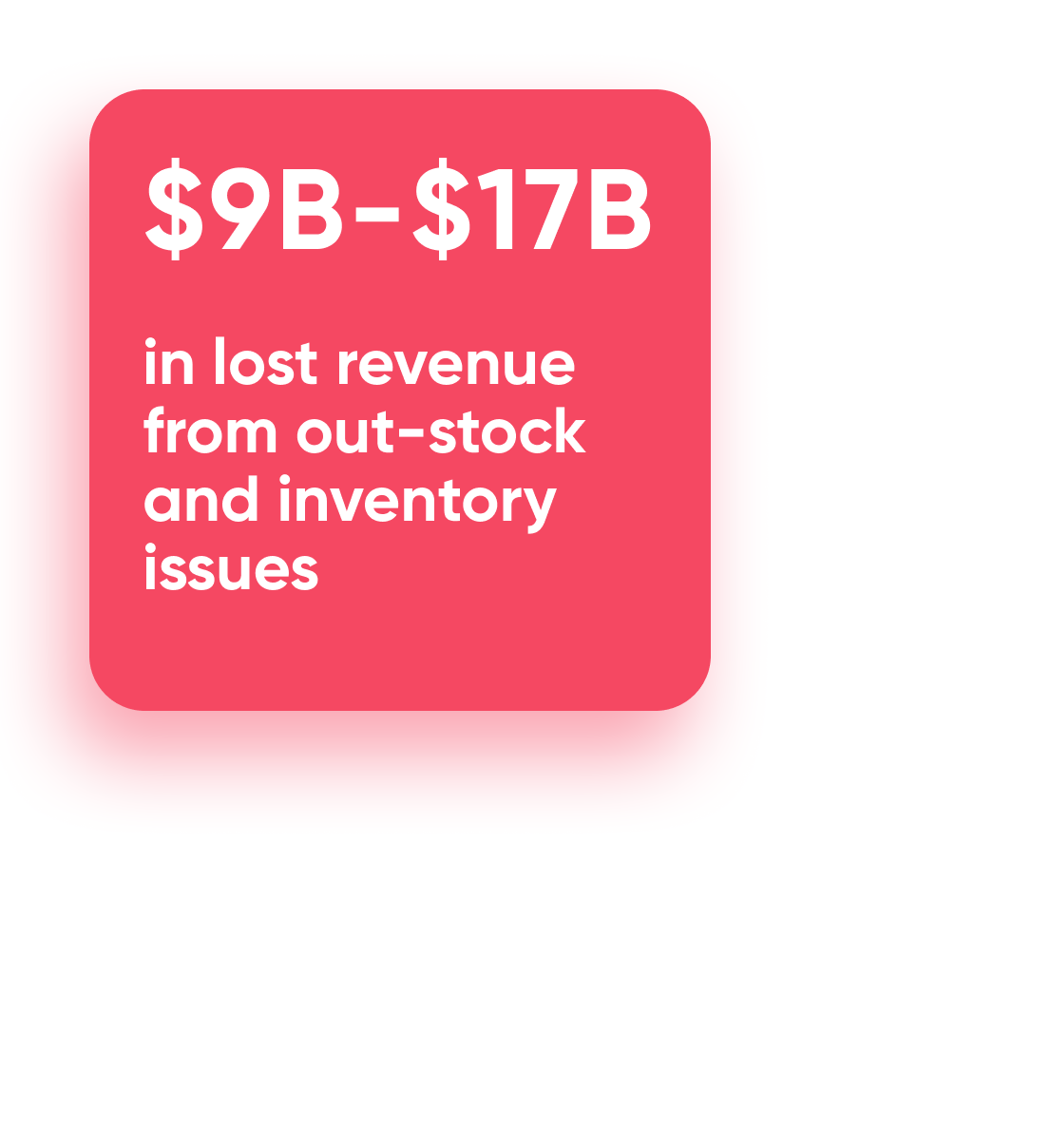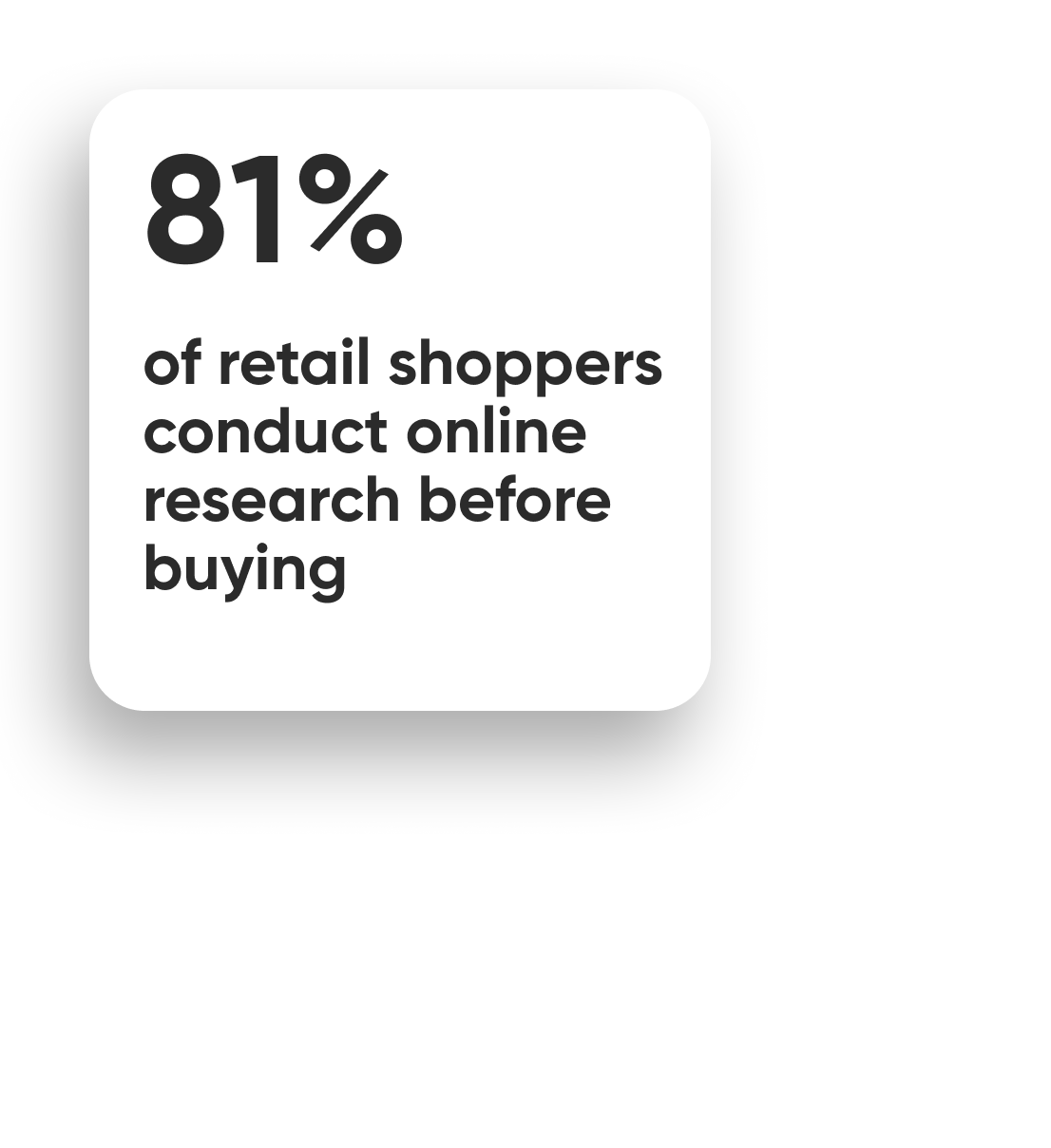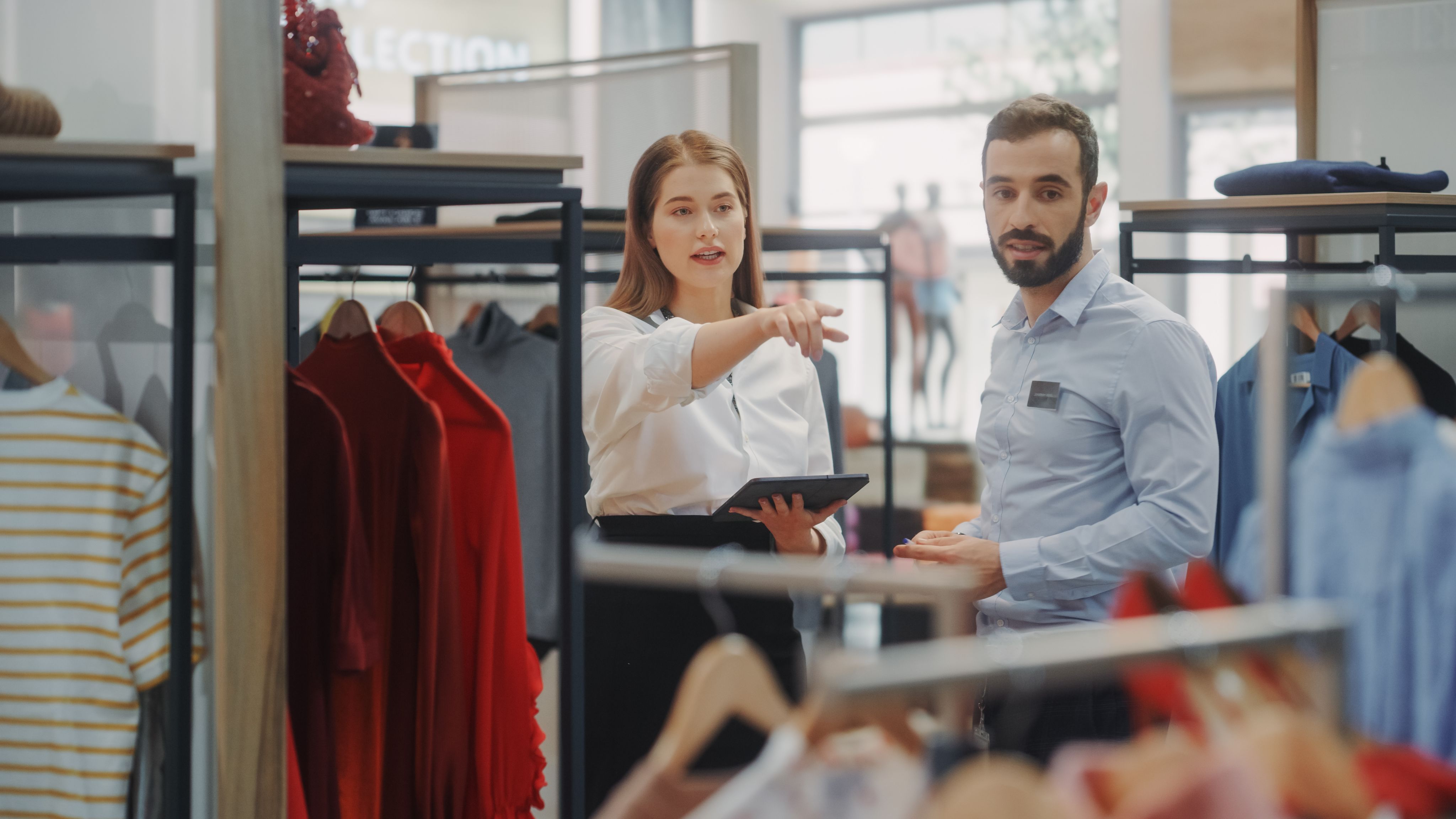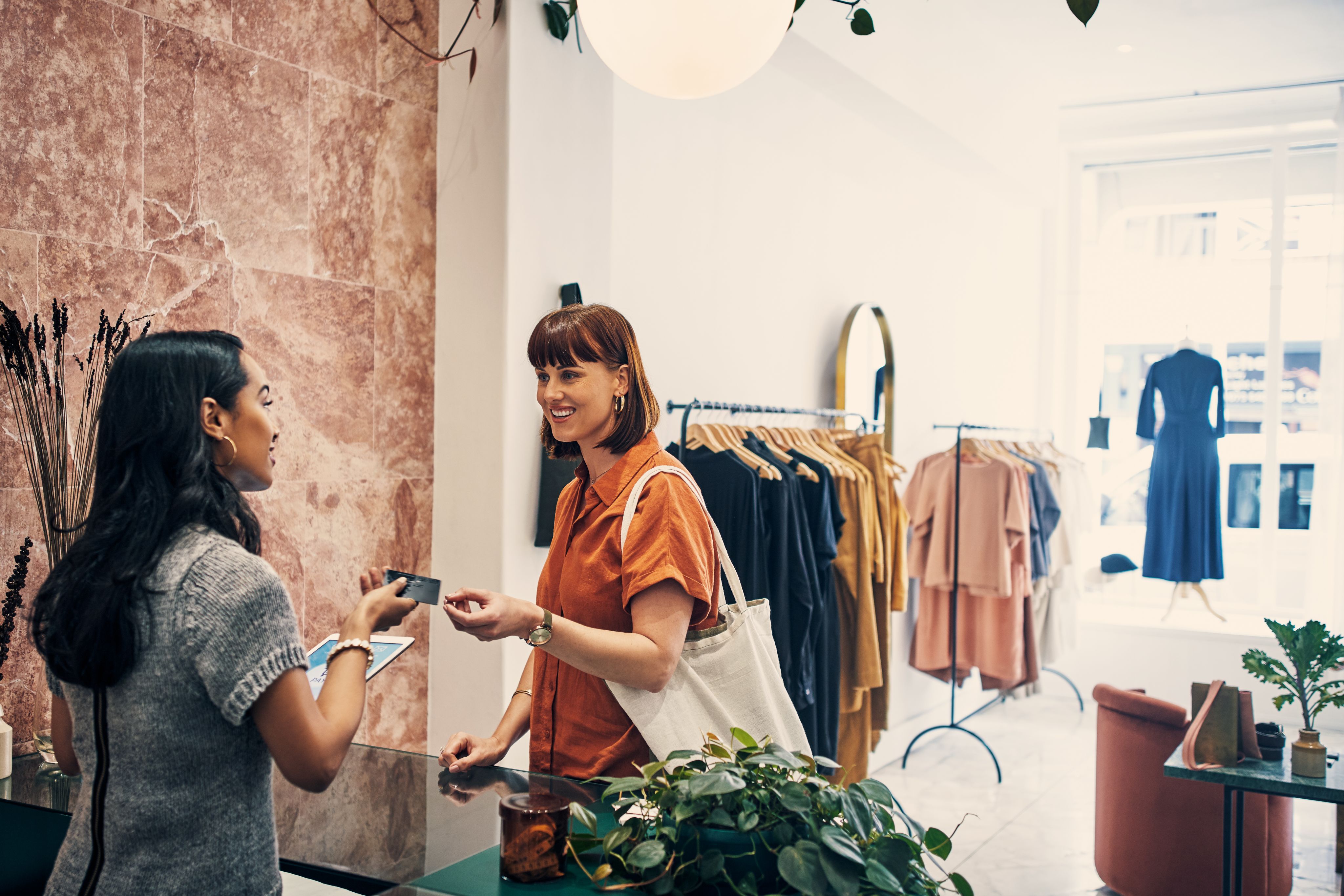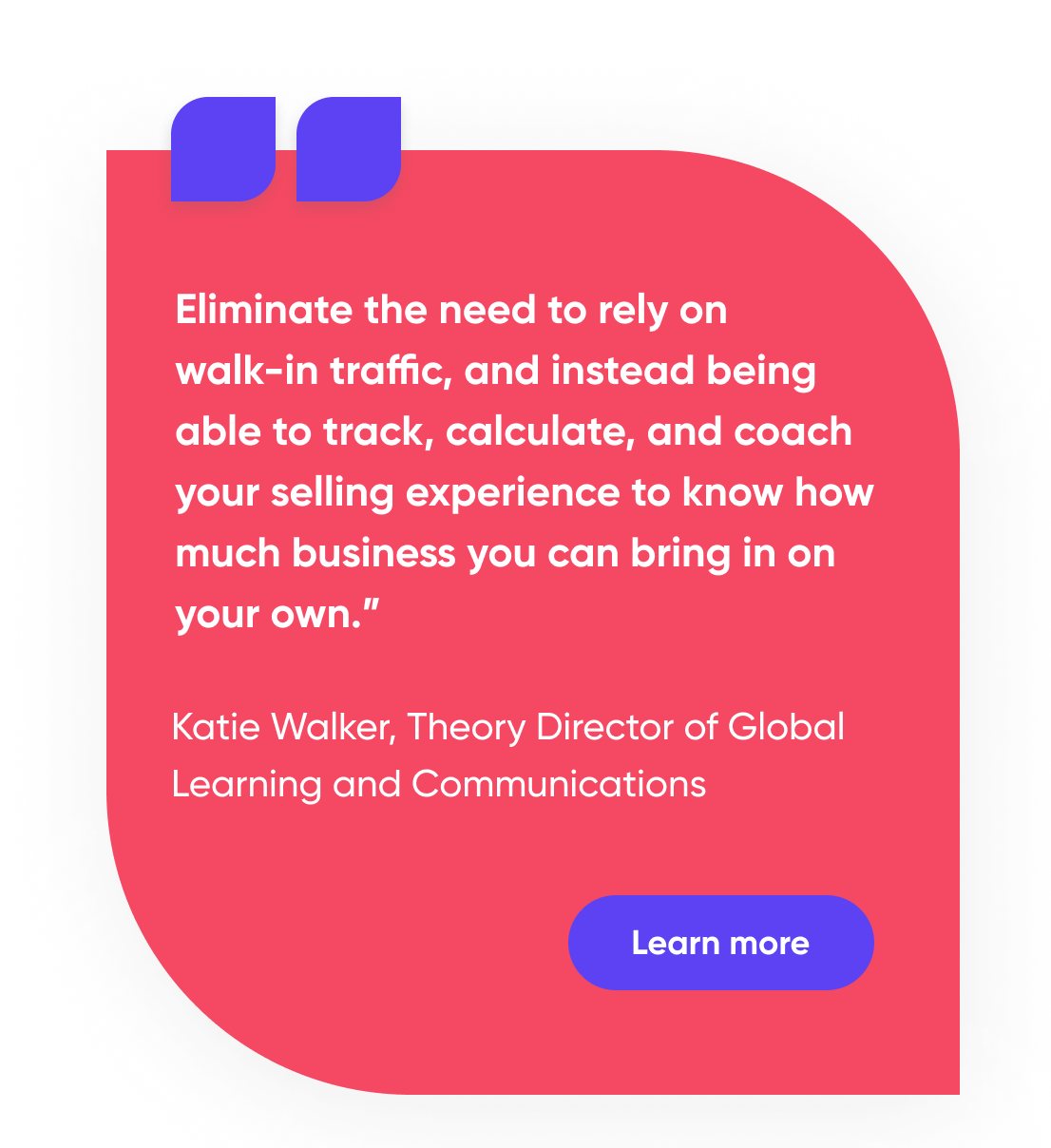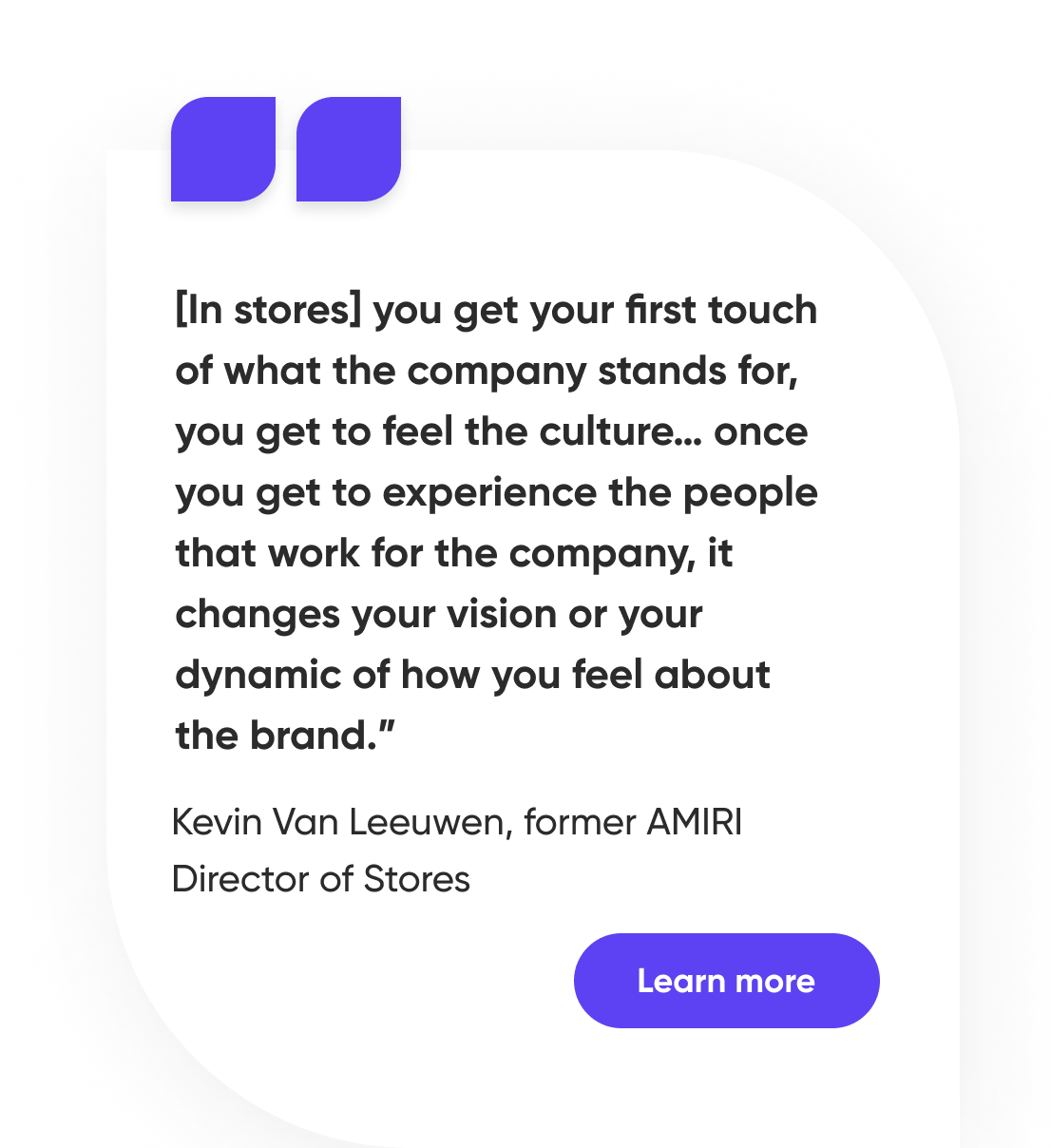
The future of retail technology


What to expect

The retail industry is in a state of flux. The pandemic has accelerated the shift to online shopping, and the next generation of consumers is demanding more personalized and seamless experiences.
To stay competitive, retailers need to adopt next-generation technology that can help them deliver these experiences.
But where should we start? What problems are we solving? What solutions are we looking for? What features do we need to achieve them? And how can we implement it?
This ebook will explore the latest trends in retail technology and how they can be used to improve the customer experience.
We will discuss topics such as:
The state of retail
The impact of the pandemic, the next generation of consumers, and ecommerce shopping on the industry as a whole, and how they have led to The Shopping Revolution.
How to perfect the in-store experience
What are customer’s top pain points and how are retailers addressing them? What is the role of next-gen technology in enhancing the in-store experience and how does it pay off?
The Technical side of next-gen technology
What are the technological benefits of next-gen solutions, what features you need to look for in next-gen technology, and how do you implement these systems in your business without a hitch?
The state of retail

Why some retailers are struggling while others are thriving
The COVID-19 pandemic forced retailers to change their business strategies and adapt to the immense pressure caused by lockdowns and restrictions on in-person shopping. While these challenges caused problems for some retailers, others with a strong online presence and the ability to maintain and nurture customer engagement with their regular shoppers experienced a surge in demand.
The crisis emphasized the need for retailers to be flexible and technologically advanced, but more importantly, the need to be customer-centric. To stay competitive, retailers must adopt next-generation solutions that allow them to deliver exceptional customer experiences, regardless of what is happening in the industry.
The Impact of the next generation of consumers
In addition to the shopping environment changing, the way people shop is also constantly evolving. Different generations of shoppers have a unique set of likes, dislikes, and expectations.
As Millennials, Centennials (Generation Z), and Generation Alpha take the center stage, retailers face new challenges and opportunities in meeting each generation’s needs and wants as they too evolve over time.
Understanding the characteristics, needs, and behaviors of these next-gen consumers is crucial for retailers seeking to build lasting relationships and drive customer loyalty.
Millennials: The digital natives
Millennials, often termed as digital natives, hold immense purchasing power estimated at a staggering $2.5 trillion USD. They are ardent advocates of convenience, personalization, and seamless experiences across various channels. For retailers, capturing the hearts of Millennials means embracing digital solutions and providing tailored experiences that cater to their tech-savvy preferences.
Centennials (Gen Z): Riding the tech wave
Raised in an era of rapid technological advancements, Gen Z wields substantial purchasing power of approximately $360 billion USD. This generation has unique expectations when it comes to retail experiences, demanding authentic interactions and seamless integration of technology into their shopping journey. Retailers must leverage cutting-edge in-store software to win over the hearts of these tech-savvy shoppers.
Generation Alpha: The gamified and engaged
Born into a highly connected world, Generation Alpha is accustomed to fully digital and interactive experiences. They expect retailers to go beyond convenience and sustainability, seeking engaging and rewarding interactions with brands. For retailers, offering gamified experiences and interactive elements will be pivotal in captivating Generation Alpha and earning their loyalty.
By understanding and adapting to the preferences of different generations, retailers can position themselves as industry leaders and capture the hearts of their target customers. Those retailers who fail to adapt as quickly as the consumers will suffer the consequences and will be substituted by brands who do.
The “Amazon Effect”
Amazon, the e-commerce giant, has had a profound impact on the retail industry. By recognizing early on that a customer-centric approach was key to success, Amazon disrupted traditional retail models and pioneered new ways of delivering exceptional experiences.
The company realized that what was once considered acceptable, such as a 7-day delivery time, has become outdated in today's fast-paced world. So, Amazon introduced policies that adapted to the new expectations, such as next-day and even same-day delivery options, which set a new standard in speed and convenience. Additionally, they implemented features like free shipping, one-click shopping, hassle-free returns, and personalized recommendations.
So, when you have a constantly evolving customer on one side and customer-centric companies like Amazon who are not just meeting but exceeding customer expectations on the other, you get a bar that keeps getting higher and higher.
The shopping revolution
All of these factors contribute to what experts are calling The Shopping Revolution— a shift in the mindset of consumers from being product-focused to experience-focused.
Take a moment and imagine that you need to replace your smartphone. What brand comes to mind? Why that brand? It’s probably not due to just the battery life, camera quality, processor, or screen specs, but rather because of your past experiences with this brand vs. others.
Customer satisfaction is no longer solely determined by the product or service offered; it encompasses the entire experience, from the moment a potential customer becomes aware of the brand to the post-purchase support and beyond.
Understanding and addressing the needs, feelings, and experiences of customers, including the pains and pleasures they encounter during their shopping journeys, is mission-critical in creating a holistic approach that builds lasting relationships and fosters business growth.

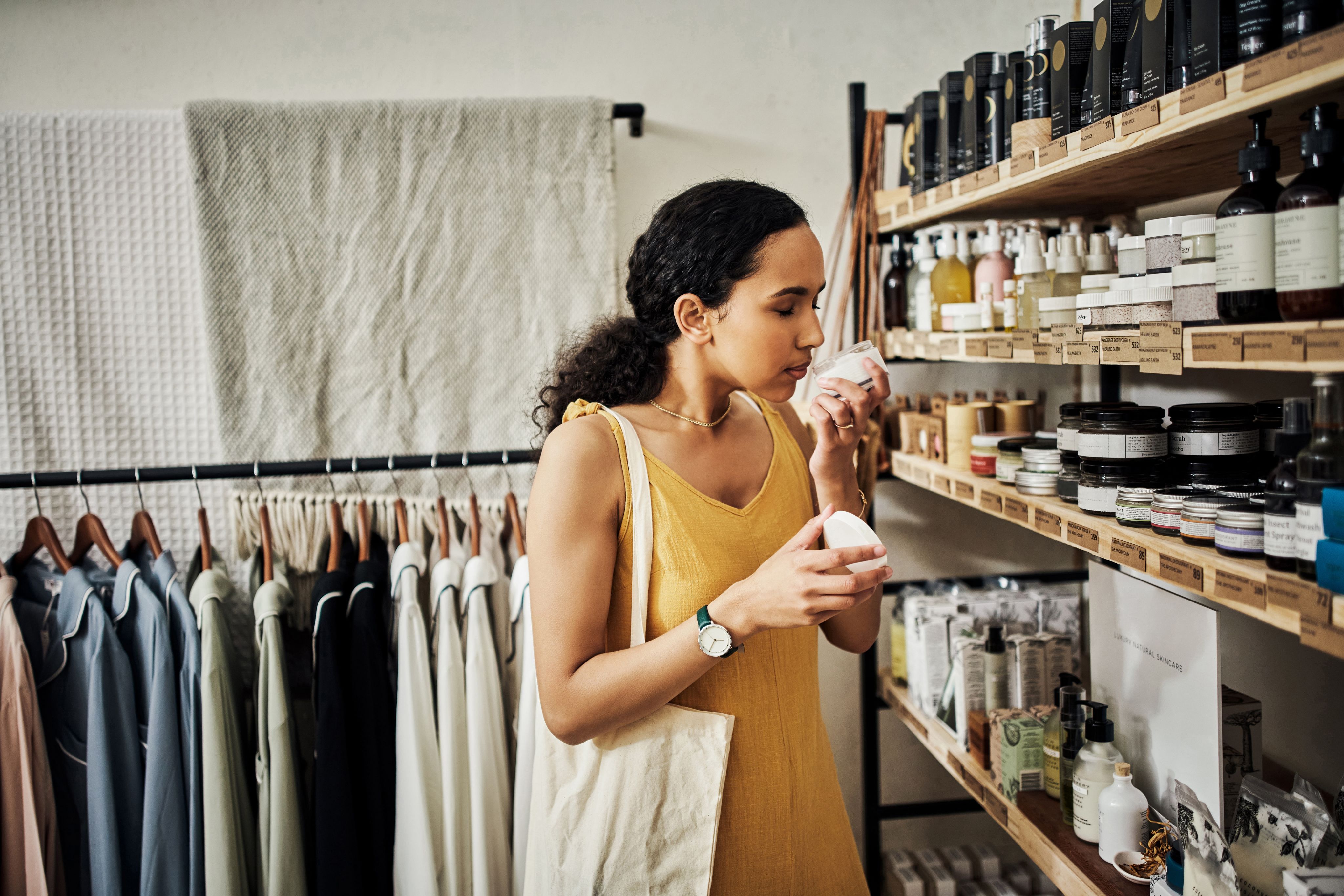
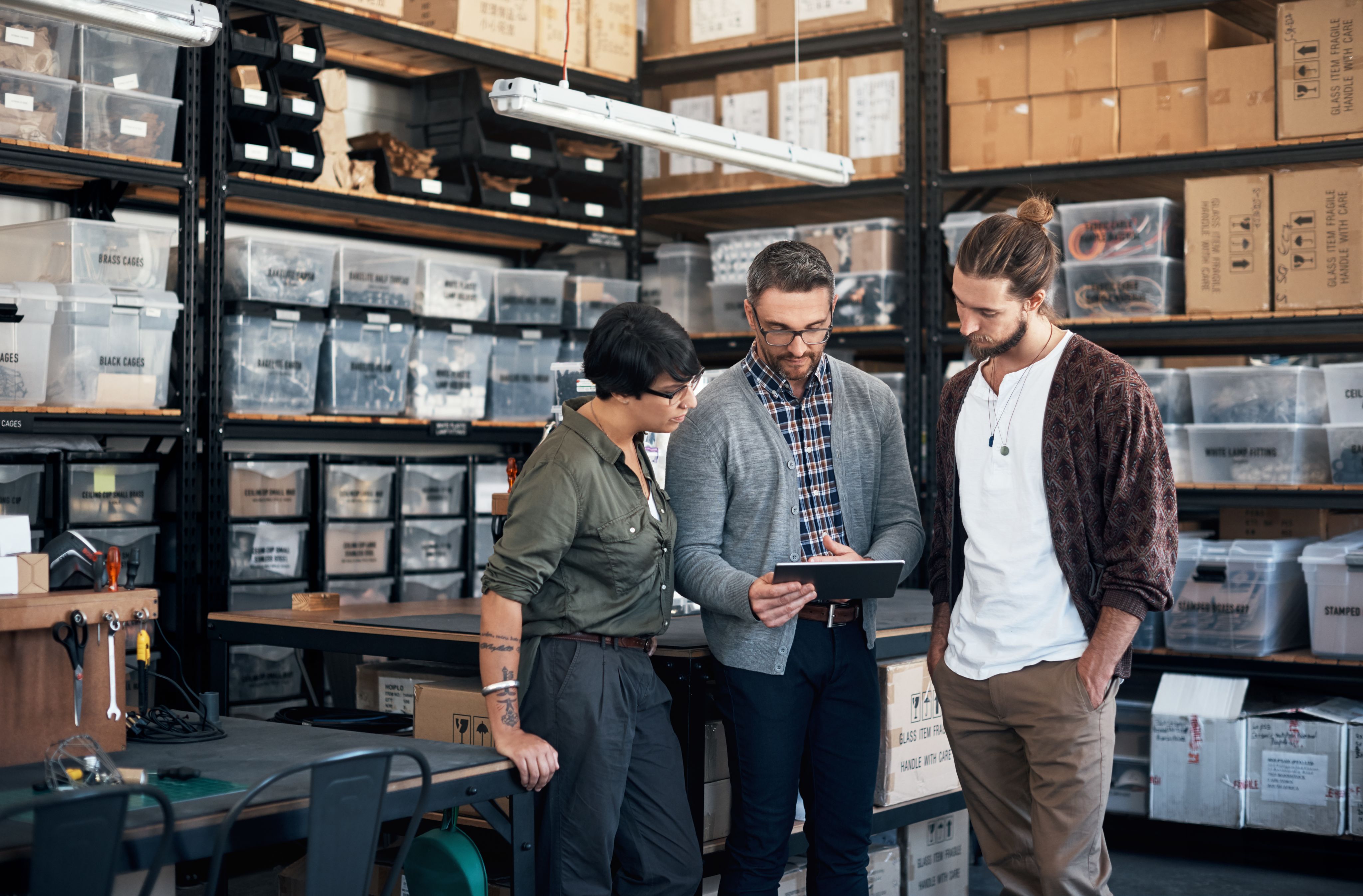



Perfecting the in-store customer experience

The pleasures and pains of shopping
The pleasures of shopping encompass the positive emotions and experiences that customers seek when engaging with a retail brand. This includes aspects such as discovering new products, experiencing great customer service, immersing themselves in an engaging store atmosphere, and being rewarded with personalized offers.
While enhancing the pleasures of shopping is crucial for creating positive customer experiences, it's essential to recognize that this alone may have limitations.
To truly deliver stand-out experiences, retailers must also prioritize and diligently address the pain points that customers encounter. Challenges such as long checkout times, unhelpful staff, out-of-stock products, and pressure to purchase all add to an unpleasant experience with a brand that may lead the customer to never go back.
Striving to minimize the negative aspects of the shopping experience makes the difference between a satisfied one-time customer and a loyal advocate for the brand.
Addressing customer pain points
So, what would happen if you could solve all the major pain points shoppers experience in your stores? By tackling pain points head-on, retailers can create enjoyable and memorable shopping experiences that turn every shopper into a brand ambassador.
Provide close to immediate response
One of customer’s primary pain points is long waiting times at the checkout counter. Customers are often frustrated by standing in line for extended periods, leading to a negative overall experience.
But it’s not just the lines. Anytime a customer has to wait for an associate to acknowledge them, grab a product from the stockroom, or try to find product information can quickly transform an otherwise satisfying trip into an excruciating process.
The alternative? Find every opportunity to reduce waiting times across the in-store shopping experience.
You can start by looking at the most common situations such as:
- Checkout lines
- Having to look in “the system” for a specific product
- Going to the backroom to pick out a specific item
- Waiting for a dressing room
- Click & collect lines
Next-gen store solutions will help solve most if not all of these problems with features like mobile checkout options, endless aisle catalogs, or in-store fulfillment. By streamlining the customer’s discovery, selection, and checkout processes, retailers can reduce wait times and improve customer satisfaction.
Upgrade store associates into personal shoppers
Customers expect knowledgeable and attentive store associates who can provide guidance and assistance on the full breadth of products their brand offers.
At times, they may even need advice or answers for highly specific inquiries such as:
- Is this foundation good for combination-skin types?
- Does this laptop come with a warranty, and what does it cover?
- Were the ingredients used in this perfume sourced sustainably?
- What are the measurements for this online-exclusive sweater?
But, the problem is that intensive training on every single SKU would take a significant amount of time which in many cases just isn’t feasible.
In the same way that customers use their smart device to learn everything about a specific item— and all the retailers who offer something at least similar— store associates should possess a similar device to assist customers (and themselves) when faced with a unique question or request.
Next-gen store systems can support retailers in training and empowering their staff with access to real-time product information, inventory visibility, and customer data. Equipped with this knowledge, store associates can deliver personalized recommendations, answer queries, and create meaningful interactions with customers, enhancing the overall shopping experience.
Enable x-ray vision beyond the four walls of the store
Imagine being filled with excitement as you step into a store with your heart set on testing and purchasing the latest gaming console that has consumed your thoughts for weeks. Only to be met with the disappointing news from an associate that the product is out-of-stock, with no timeline for restocking.
In this day in age, you should be able to get any product in your catalog into customers’ hands regardless of where they are or where the item is located.
Enabling an “endless aisle” view of the inventory is so easy, everyone can (and should) do it.
Systems with advanced inventory management capabilities enable retailers to maintain accurate, up-to-date inventory records. By integrating inventory data across channels and providing real-time visibility to customers, retailers can ensure that products are available when and where customers expect them.
Foster customer lifetime value
True sales professionals nurture relationships first and sell second.
Take a moment and think of retail companies that often take more time to sell their products, such as a car dealership or a high-end jewelry store. It’s not common for a customer to simply enter and buy something on-the-spot. This type of sales takes time due to the nature of the product.
This is pretty much the way most consumers think of shopping anywhere these days as customer journeys become more complex.
Due to the huge offering in the market and easy access to information, people looking to buy a product will conduct one or more pre-purchase research exercises. Therefore, the store is no longer the main channel for a customer to assess, compare and purchase things. Stores are actually seen by customers as a place where they can conduct their research about your brand and products and only purchase when they are satisfied with their findings.
Many retail experts are suggesting that stores make the transition into testing locations or showrooms where customers can explore your brand and products and validate if there’s a good fit for what they are looking for.
In this scenario, there’s no place for a pushy salesperson. Nothing disrupts the discovery journey more than a store associate rolling their eyes because someone asks multiple questions after stating that they are “just looking”.
In a next-gen store, proactive staff should assist customers, discuss brand essence, and follow up to influence decisions, creating a memorable experience and fostering brand loyalty. Next-gen POS systems with clienteling capabilities empower retailers to build lasting customer relationships through personalized services and a consultative sales approach.
The role of next-gen technology in enhancing the in-store experience
Technology plays a vital role in enhancing the in-store customer experience by providing retailers with the tools they need to understand their customers better. With the help of next-generation POS systems with clienteling capabilities, retailers can gather and leverage customer data to deliver personalized recommendations, tailor promotions, and provide a more engaging shopping experience.
For example, a retailer can use customer data to identify which products are most popular with certain demographics, and then use this information to create targeted promotions. Additionally, retailers can use customer data to track individual purchase histories and identify which products a customer is likely to be interested in. This information can then be used to provide personalized recommendations to customers as they shop.
In addition to providing personalized recommendations and tailored promotions, technology can also be used to improve the overall shopping experience in other ways. For example, retailers can use technology to provide customers with real-time inventory information, so they know what products are available and where they are located in the store. Additionally, retailers can use technology to provide customers with interactive maps of the store, so they can easily find the products they are looking for.
By using technology to improve the in-store customer experience, retailers can create a more convenient, personal, and memorable shopping experience for their customers. This can lead to more loyal customers who will keep coming back, which will result in increased sales and profits.
The payoff of improving the in-store customer experience
Retailers that invest in enhancing the in-store experience are better equipped to thrive in today's competitive retail landscape.
With next-gen retail solutions, retailers have at their disposal powerful tools to prioritize the in-store experience through personalization, frictionless checkout, and real-time insights.
But, how do these efforts translate to tangible business outcomes?
Next-gen tech doesn't just improve the customer experience; it generates a cascade of benefits for the business. From increased sales and enhanced customer retention to improved operational efficiency and a fortified brand reputation, retailers that embrace modern solutions are better positioned to thrive in the ever-evolving retail landscape.
Increased sales
One of the primary benefits of improving the in-store customer experience is increased sales.
By reducing pain points and offering exceptional service, retailers can drive customer satisfaction. When customers have positive experiences, they are more likely to make more purchases in the future, thus becoming loyal patrons.
Prioritizing customer experience and leveraging next-gen solutions leads to substantial payoffs for your business, including (but not limited to) improved conversion rates, higher average ticket size, increased store traffic, enhanced operational efficiency, and lastly, better brand differentiation.
Improved conversion rate
By harnessing a comprehensive view of your inventory and the flexibility to sell wherever and whenever, you can effortlessly meet your customers where they are, transforming "saving the sale" into your everyday business practice. This shift in approach translates into increased conversion rates, as every potential sale is secured, resulting in higher revenue generation for your store.
Higher average ticket size
Understanding what motivates and delights your customers opens the door to confidently introducing "close to the chest" deals that are tailor-made for their needs. The enhanced customer experience not only makes them feel valued and appreciated but also encourages customers to explore additional products and services they may not have considered before, resulting in more substantial and fulfilling purchases.
Increased store traffic
While next-gen store systems alone might not attract new customers, when integrated into a superior customer experience, a chain reaction starts. Occasional buyers transition into devoted regulars; regulars evolve into brand fanatics; word-of-mouth spreads like wildfire, as more stories are shared; new potential customers flock to your store, eager to explore what all the excitement is about.
Enhanced operational efficiency
Investing in next-gen tech proves to be a win-win strategy for both retail operations and customer experience. These advanced systems streamline day-to-day processes, reduce manual errors, optimize staff productivity, and empower retailers to maintain accurate stock levels, resulting in efficient operations and heightened customer satisfaction.
Better brand differentiation
By differentiating your brand through exceptional experiences, next-gen systems create a positive brand perception that sets the retailer apart in the market. The result is not only attracting new customers but also fostering a loyal customer base that highly values the brand's commitment to delivering exceptional service, solidifying the brand's unique position in the competitive landscape. As a consequence, you'll see increased sales, AOV, and store traffic which contribute to a significant boost in your bottom line.
The technical side of next-gen technology
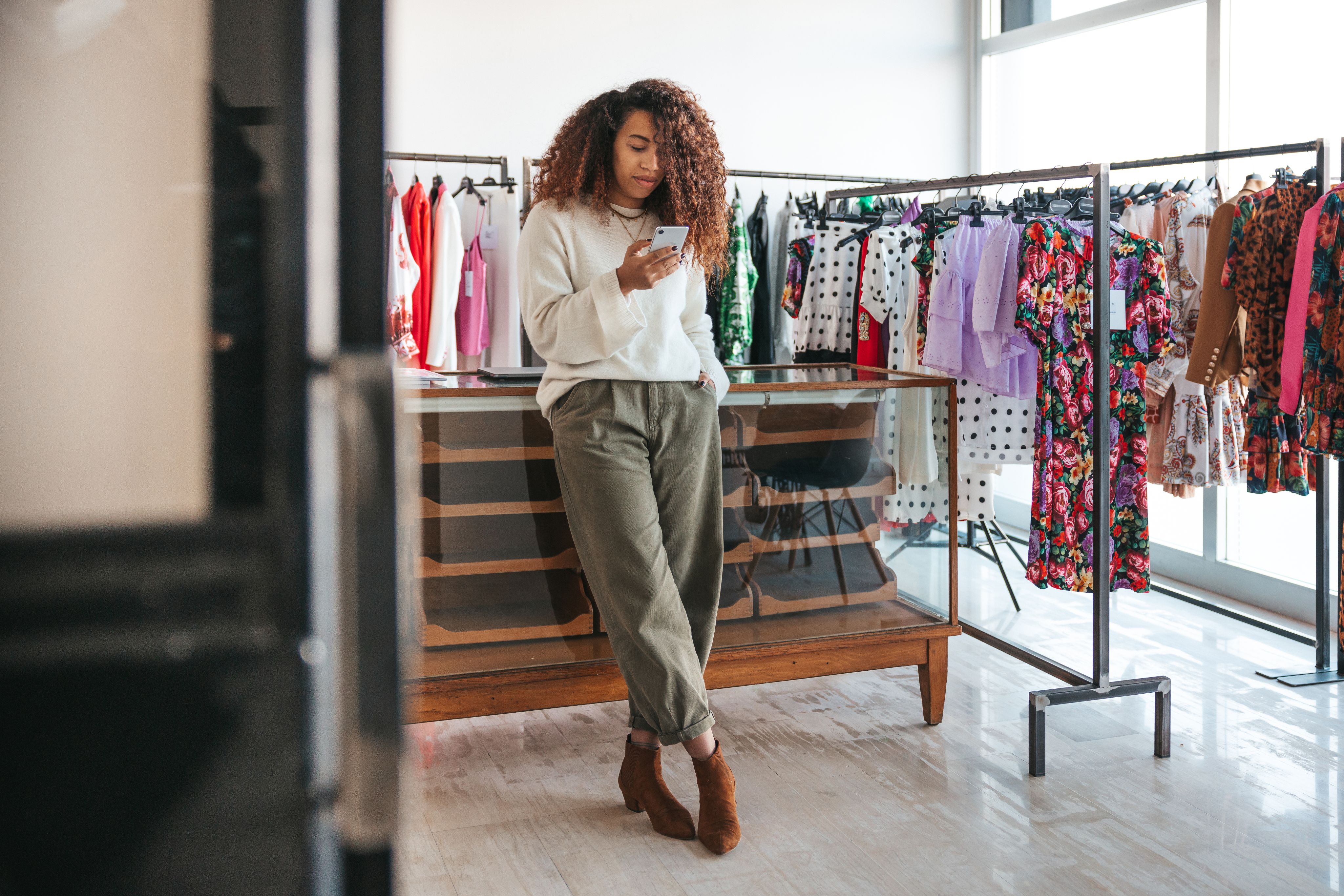
The technological benefits of next-gen store solutions
Store technology is the backbone of any retail business. It enables transactions, inventory management, customer interactions and relationships, and ultimately has the ability to make or break the in-store experience.
Traditional store technology— like legacy POS— primarily focuses on transactional functions, such as processing payments and generating receipts. While these capabilities are essential, traditional systems lack the ability to build strong customer relationships or drive sales strategically. Next-gen store technology offers a broader range of features contributing to a more customer-centric experience.
Let’s take a closer look at the technological benefits of next-gen store solutions compared to the traditional ones:
Cloud-first
Traditional in-store systems were developed 30 years ago and are based on an on-premises framework, which requires a central server at the retailer's head office and local servers at each store. Additionally, these systems often require batch updates and upgrades, which can be time-consuming and disrupt business operations. On the other hand, next-generation technology adopts a cloud-first and versionless approach, ensuring that retailers always have access to the latest features and enhancements without any disruption.
Mobile-first
When you think of traditional in-store systems, you may picture clunky fixed registers that limit the mobility of store associates. This can be a problem, as it can prevent associates from providing the best possible customer service. Next-gen in-store systems prioritize a mobile-first approach, enabling store associates to accompany customers along their journey throughout the store and even process transactions from anywhere on the sales floor.
Customer-centric
Traditional retail systems are primarily transaction-centric, focusing on making as many sales as possible in a short window of time, which alienates the customer experience. Next-gen systems, in contrast, are customer-centric and shopping focused. These systems provide retailers with tools to engage customers, track preferences, and offer personalized experiences. Next-gen in-store solutions empower store associates to act as trusted advisors, leveraging clienteling and product information to provide expert guidance to customers.
Channel-agnostic
Traditional store systems are typically channel-specific, meaning they are designed for specific retail channels such as brick-and-mortar stores or online platforms. Next-gen systems adopt a channel-agnostic approach, enabling retailers to achieve unified commerce. These systems integrate with multiple channels— such as mobile apps, online storefronts, pop-up stores or other physical locations— allowing customers to move fluidly between channels while still receiving a consistent and cohesive experience that is centered around them every time.
Intuitive and Visual
It takes on average 40 hours for associates to learn how to use a traditional retail system. Despite all the time spent learning the keys and codes, the system is still limited in what it can do as it can only enable a face-to-face interaction with the customer during the payment transaction. Next-gen tech has a visually appealing user interface that enhances the user experience, making it intuitive and efficient for associates to navigate the system. A beautiful, mobile UI also allows associates to stand shoulder-to-shoulder with customers to showcase a visual catalog of products, instead of trying to describe a text line item.
Scalable
One-time and big-bang implementations are a thing of the past. Your store systems should adapt to your constantly evolving needs, you want systems that adapt to your business plans and not the other way around. Next-gen systems are designed to scale effortlessly as the business grows, providing retailers with flexibility and agility to meet changing demand. If all you need today is line-busting, then that’s all you will deploy. If 6 months from now, you need to replace your fixed registers entirely, that’s no problem. And if one year from now you want to enable a full 360 view of the customer and the option to set up appointments, that’s totally fine. A true next-gen platform will adapt to help you release fantastic customer experiences using a crawl-walk-run approach.

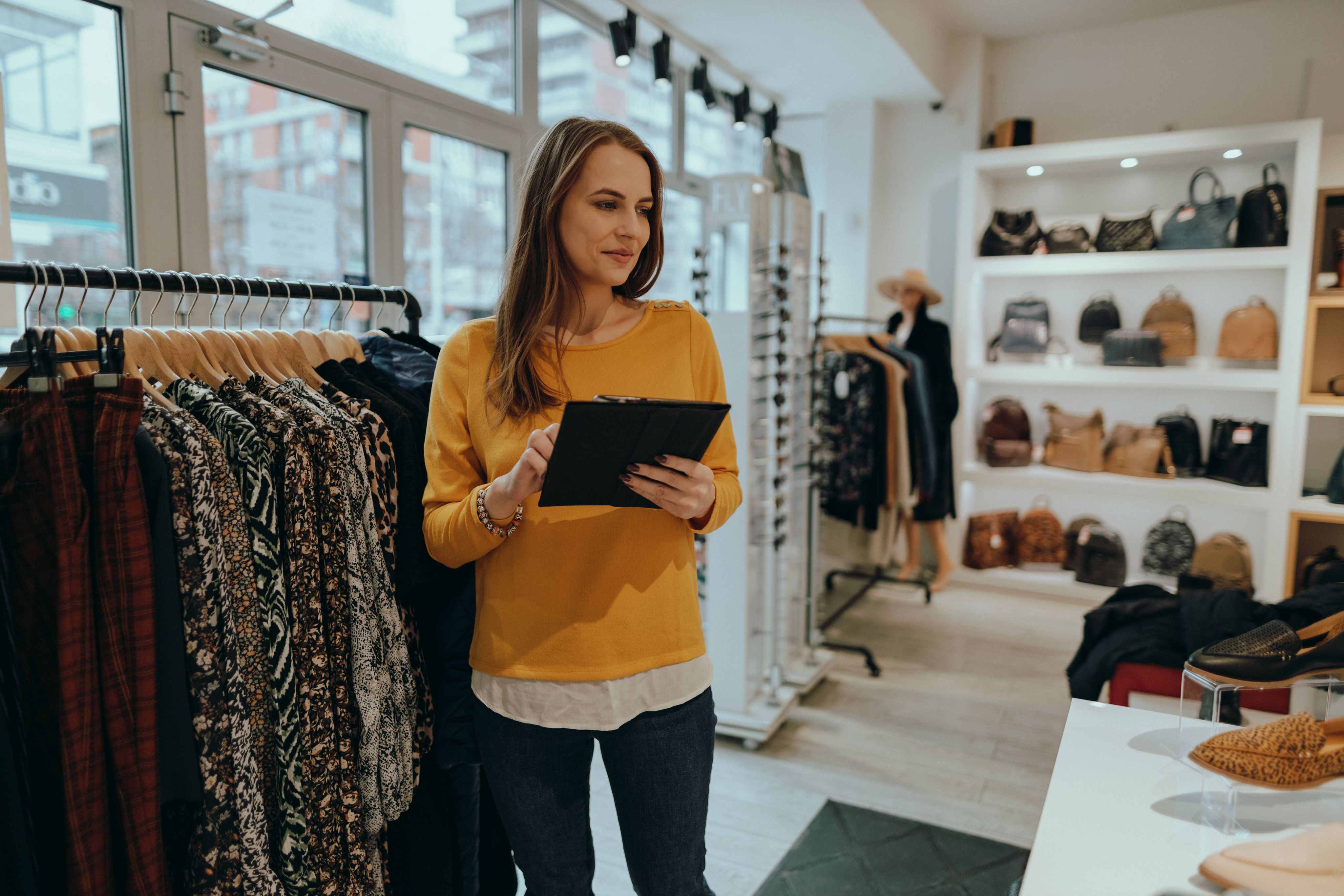

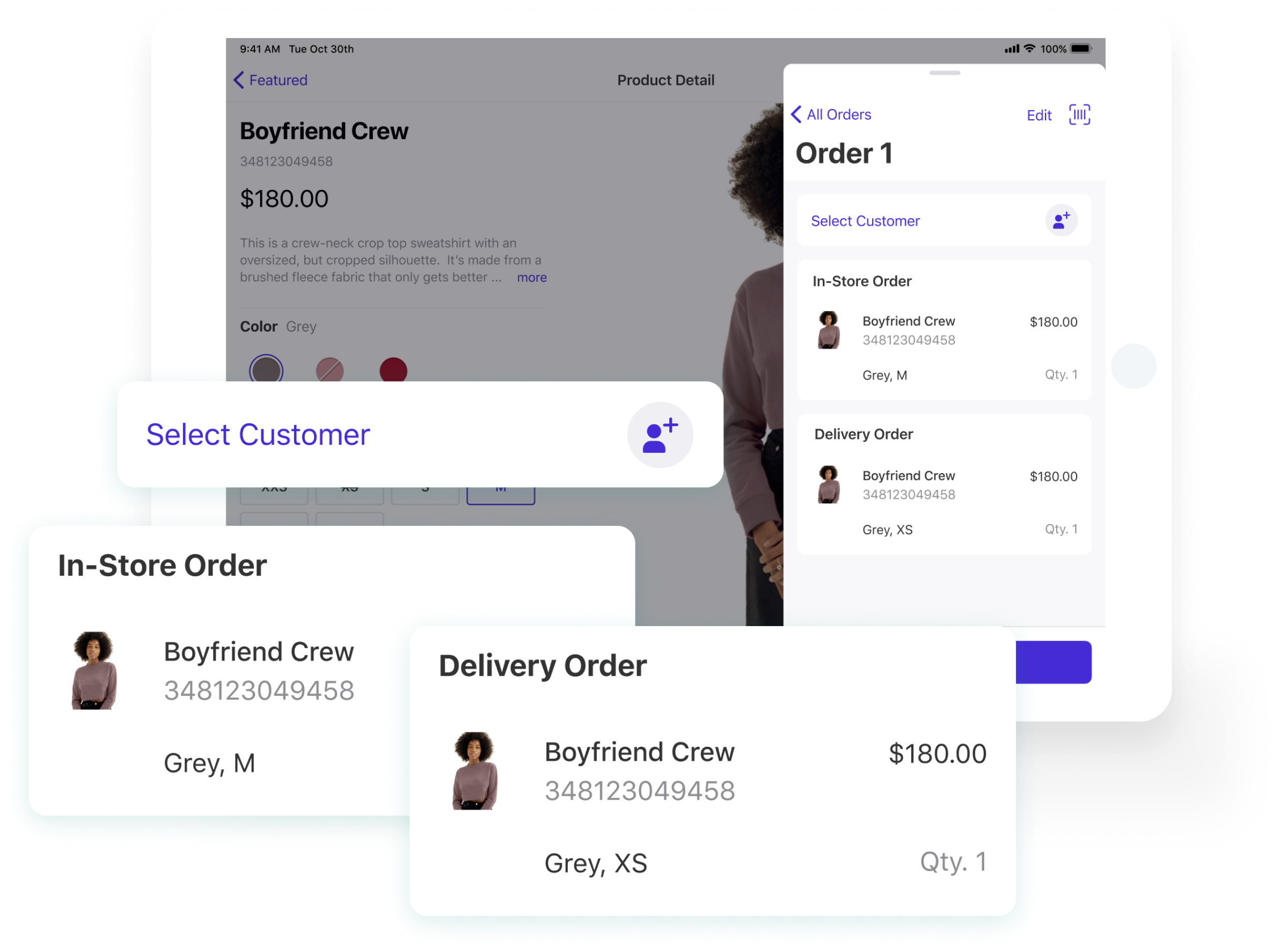
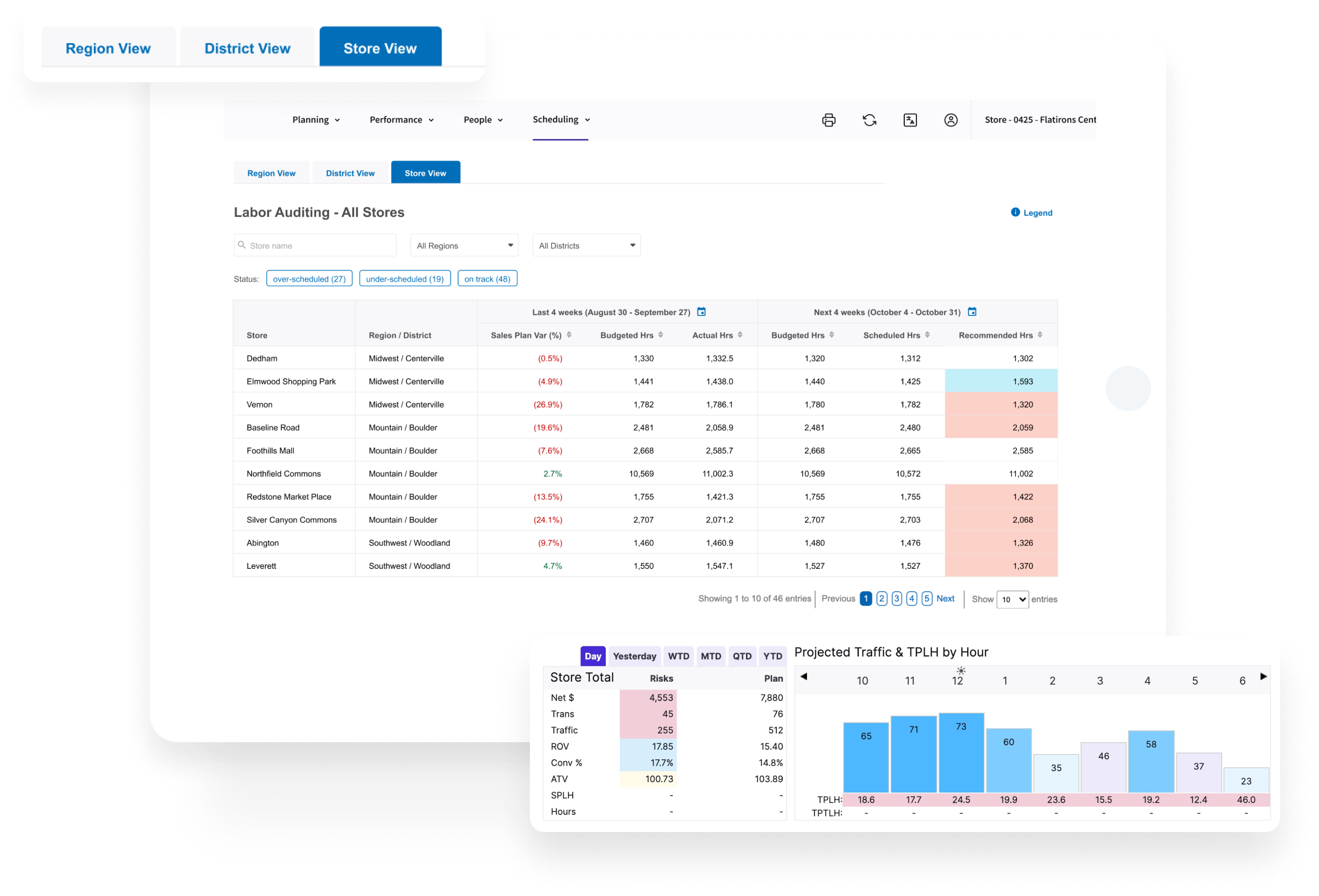
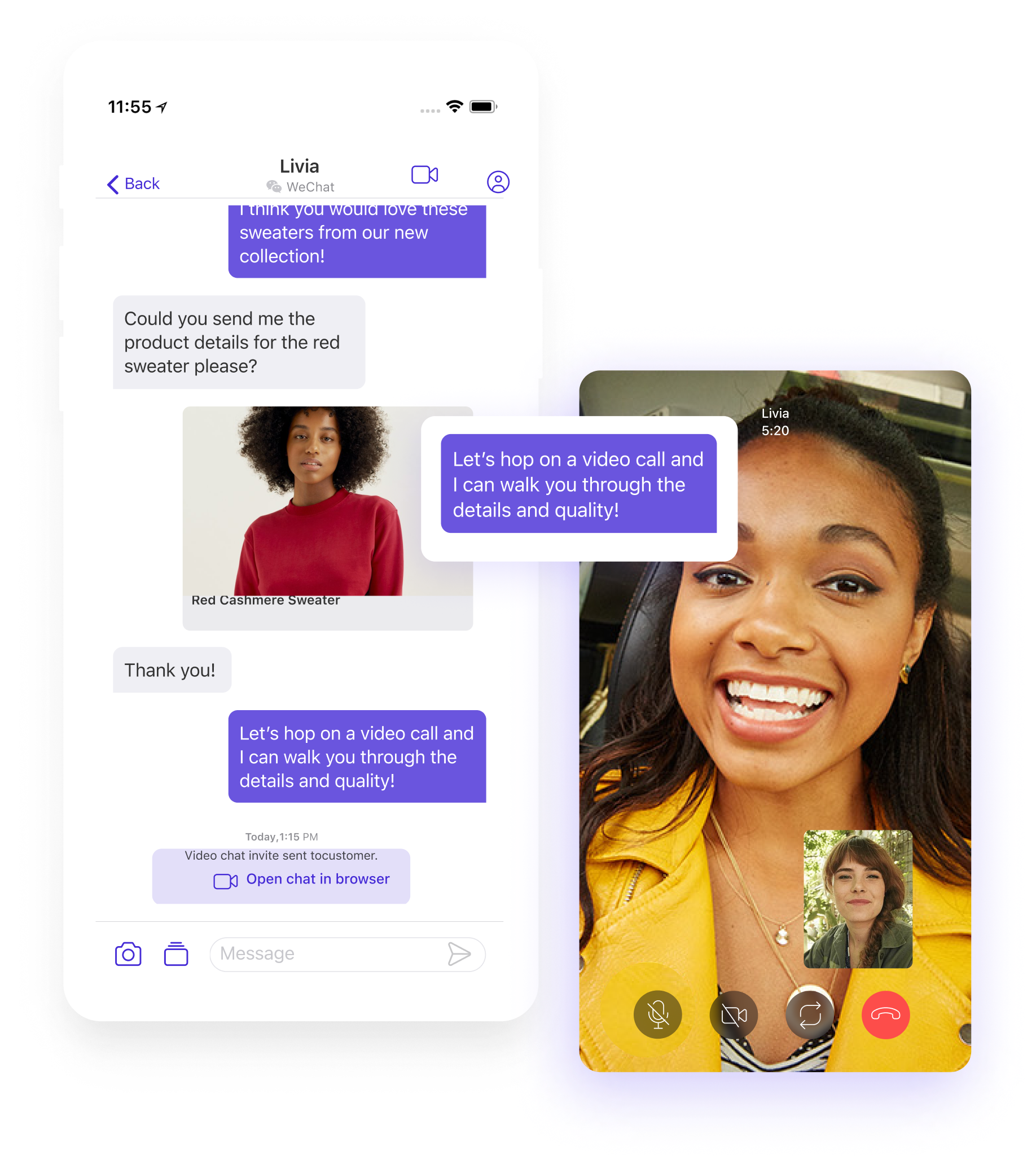
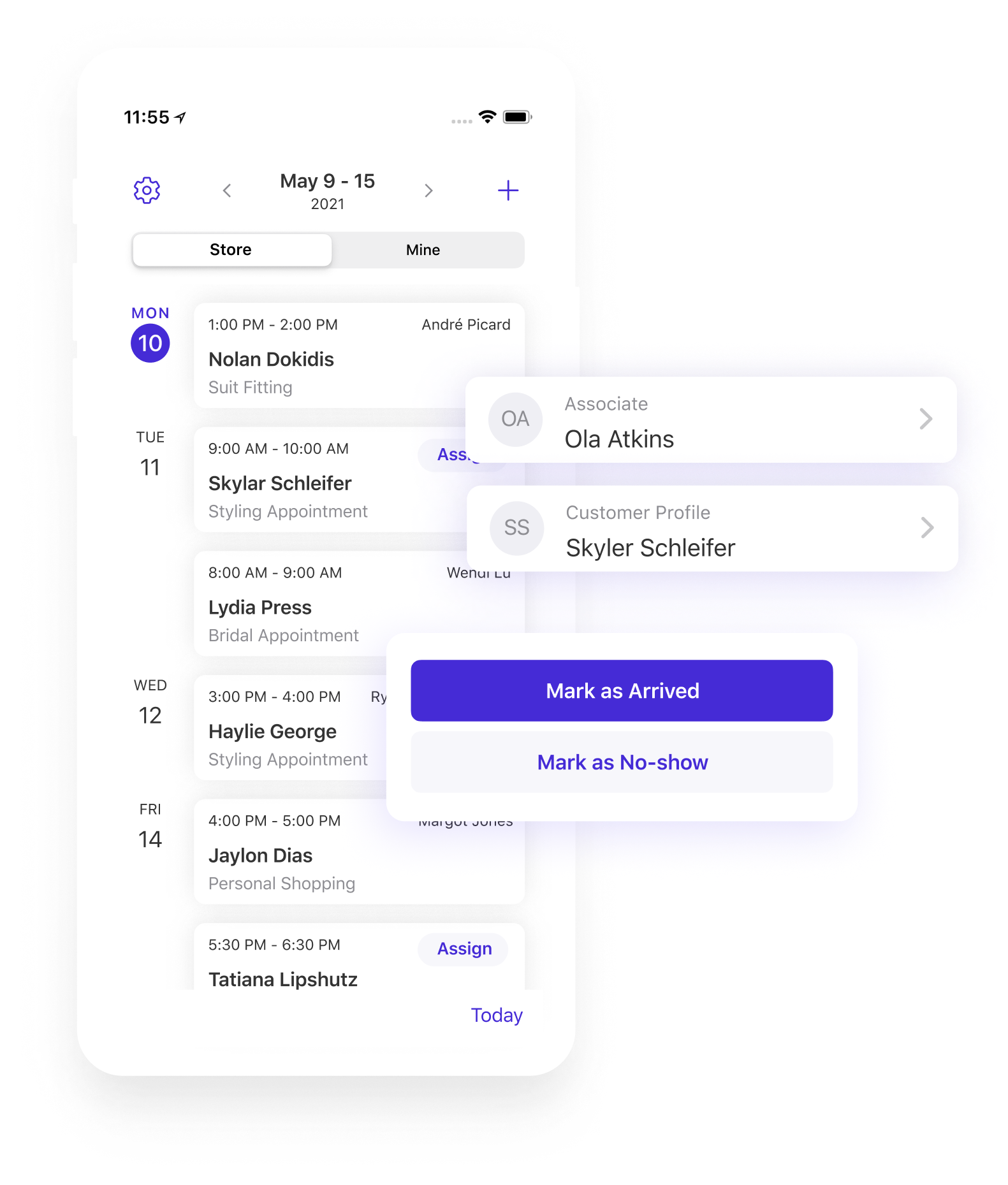
The features to look for in next-gen store solutions
From a features perspective, there are great benefits to replacing your traditional systems with next-gen ones.
For example, your POS will no longer be reserved for checkout purposes only. It can be used to track inventory, manage customer relationships, and even process payments online.
Additionally, your clienteling systems won’t be limited to in-store interactions. You can use them to connect with customers on social media, send personalized emails, and even provide customer support through live chat.
Let’s take a closer look at the features you need to look for in your next-gen store solutions:
Cross-channel inventory
A cross-channel or "endless aisle" inventory feature allows associates to showcase the full breadth of product offerings and get them into customers' hands regardless of where the inventory is located.
For example, if a customer is looking for a specific product that is not in stock at the store they are visiting, they can use the endless aisle feature to see if it is available at another store or online. If it is available online, they can order it and have it shipped to their home. This can save the customer time and hassle, and it can also help the retailer make a sale.
In addition, a cross-channel inventory feature can help retailers improve their customer service. If a customer is unable to find a product in stock, they can contact the retailer and ask if it is available. The retailer can then look up the product's inventory status and provide the customer with accurate information. This can help the retailer build trust with its customers and improve its reputation.
Omnichannel checkout and returns
Omnichannel checkout and returns provide an easy, convenient, and unified shopping experience for customers.
Omnichannel checkout gives associates one-touch access to inventory at other locations and online and enables them to checkout the customer’s full order in a single transaction, even if it’s a mixed basket.
Omnichannel returns let associates process returns purchased online as easily as those purchased in-store. A positive return experience gives customers confidence to buy again and is shown to lead to a higher lifetime customer value. According to Accenture, a well-managed return experience can drive a 2246% increase in profit per customer on average over six months, and a 29% increase over a three-year span.
Real-time reports and insights
Retailers need an analytics tool that goes beyond end-of-day totals to provide advanced real-time reporting and forecasting. This information can be used to make better decisions about inventory management, staffing levels, and marketing campaigns.
For example, an analytics tool can help retailers identify which products are selling well and which are not. This information can then be used to adjust inventory levels, so that retailers don't have too much of one product and not enough of another.
Additionally, analytics tools can be used by associates to track their performance in real-time and see if they are on track to meet their targets. This information can be used to plan ahead and make sure that the business is on track to meet its goals.
Integrated omnichannel communication
Retailers need to be able to communicate with customers using the medium they prefer, including email, SMS, phone, live video, or social messaging tools like Whatsapp and WeChat--and keep records of all conversations attached to the customer profile.
This also allows for the customer-brand relationship to be kept consistent, since all the information including past interactions is accessible to anyone who might interact with the customer. This allows them to get the same personalized treatment everytime, no matter where or who they shop with.
Appointments
Appointment setting is an important feature for retailers because it helps them bring in predictable foot traffic and drive business strategically.
By making it easy for customers to book appointments and events, retailers can ensure that they have a steady stream of customers coming into their stores. This can help to reduce wait times and improve customer satisfaction.
Additionally, appointment setting can help retailers to better understand their customers' needs and preferences. By collecting data on the types of appointments that customers are booking, retailers can identify trends in customer behavior that allows them to proactively meet their needs— such as setting an appointment for the new winter line ahead of the customer’s annual holiday party.
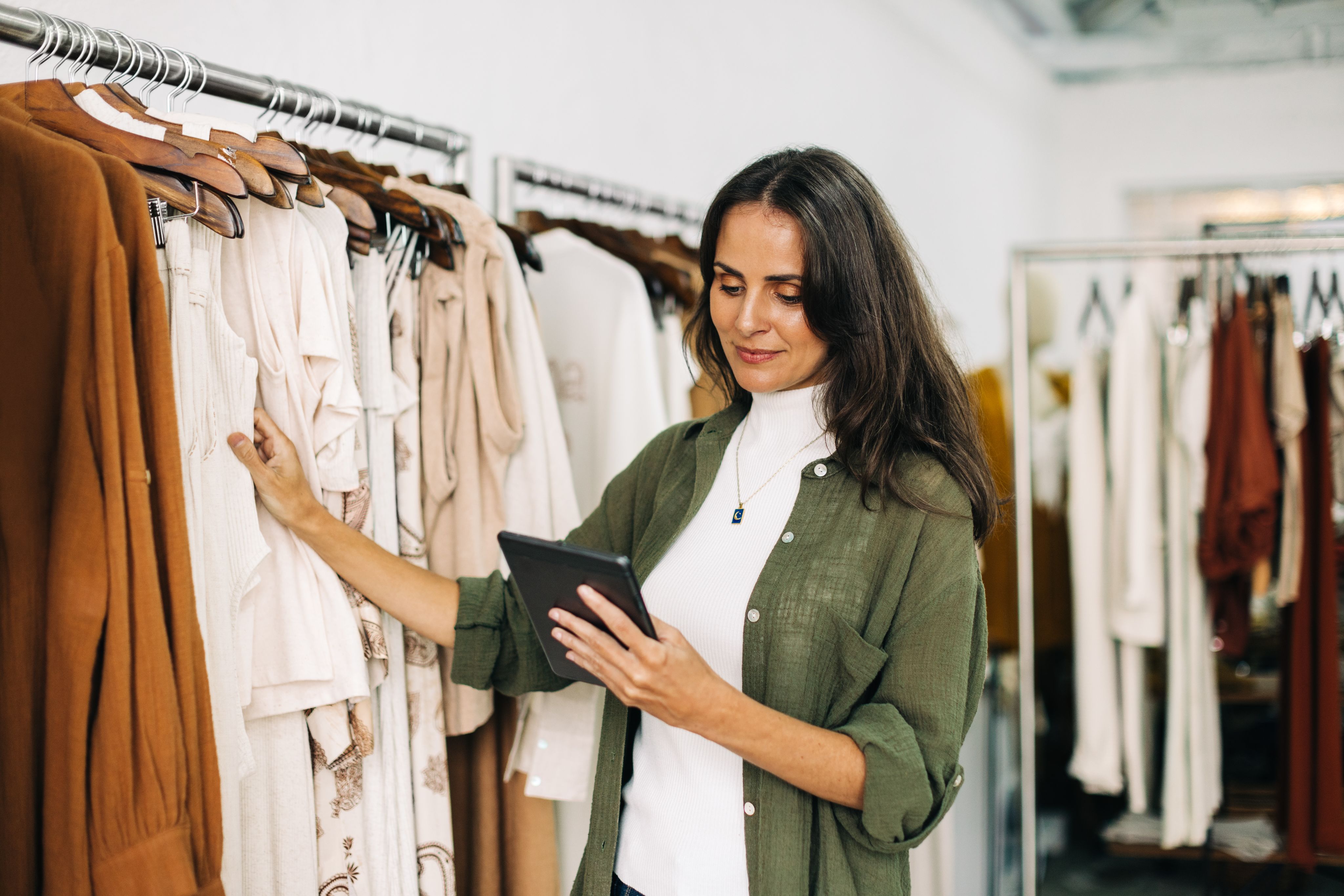
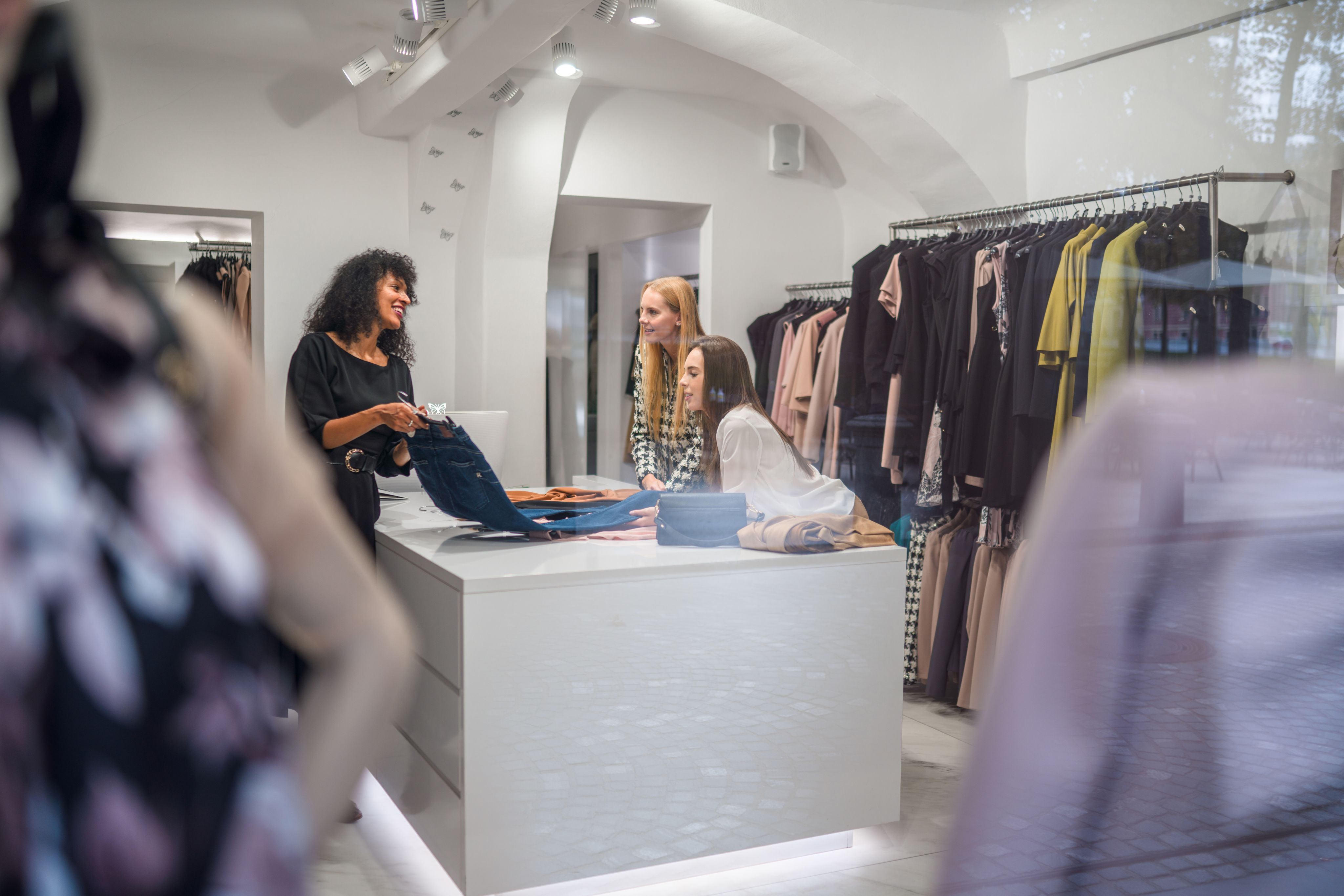
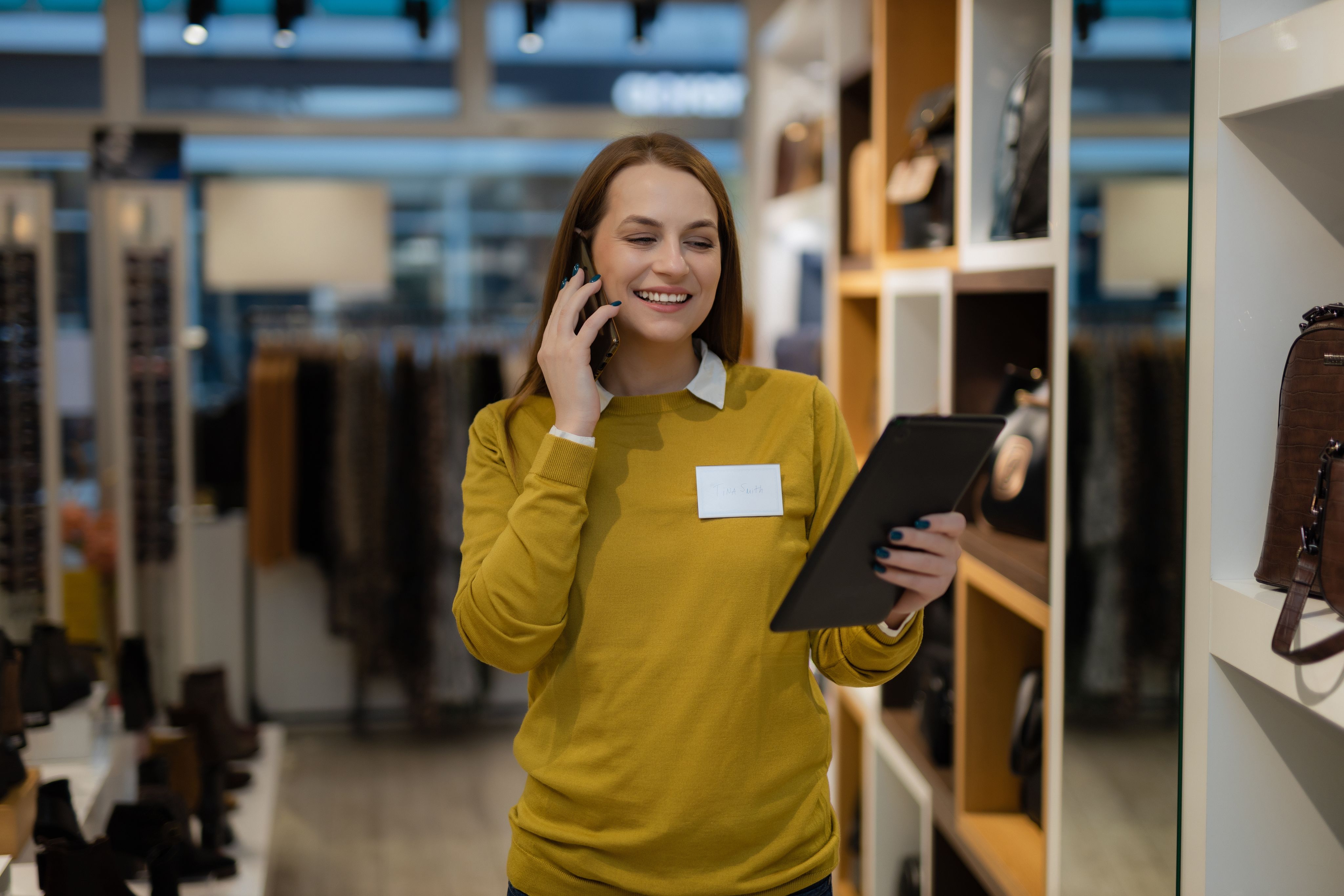



Making next-gen tech work for your business

Thanks to the technical, financial, and experiential benefits of next-gen tech, it’s clear that it’s a solution meant to bring a great cost-value ratio to the table— this is by design.
Next-gen tech needs to be an easily deployed solution that can scale to meet your business requirements for a low TCO (Total Cost of Ownership) and bring great value to both your store staff and your customers.
Nonetheless, there are still a few guidelines that will help you deploy your next-gen tech in a smooth way:
Step 1
Conduct a comprehensive assessment of your current systems and infrastructure
This assessment helps identify any gaps or limitations that need to be addressed to ensure a smooth integration. It is essential to consider factors such as hardware requirements, software compatibility, data migration, and staff training needs.
Step 2
Establish clear goals and objectives for implementing next-gen tech
Whether it is improving the customer experience, increasing sales, or optimizing operations, defining specific goals helps guide the implementation process and measure success.
Step 3
Select the right next-gen tech vendor
Businesses should evaluate vendors based on their industry experience, product capabilities, scalability, customer support, and integration capabilities. It is essential to choose a vendor that aligns with your business requirements and has a track record of successful implementations.
Step 4
Create an implementation plan
Once the vendor is selected, thorough planning and project management are necessary for a successful implementation. This includes creating a detailed timeline, assigning responsibilities, and setting milestones. Adequate communication and collaboration with stakeholders, including store associates, IT teams, and senior management, are crucial throughout the implementation process.
Step 5
Train staff and form a change management strategy
Businesses should invest in comprehensive training programs to ensure that store associates are proficient in using the new system and understand its benefits. Change management strategies should be employed to address any uncertainty or concerns among employees and facilitate a smooth transition.
Step 6
Perform data migration
Businesses should carefully plan and execute the transfer of data from the old systems to the new next-gen tech solution. This includes customer data, product information, inventory records, and transaction history. Data accuracy and integrity should be ensured throughout the migration process.
Step 7
Continuously monitor and evaluate system performance
Finally, ongoing monitoring and evaluation are essential to assess the performance of the next-gen tech solution and make any necessary adjustments. Businesses should track key metrics such as customer satisfaction, sales performance, and operational efficiency to measure the impact of the new system. Regular reviews and feedback loops with store associates and customers can provide valuable insights for continuous improvement.
Key takeaways
The state of retail:
- The pandemic forced retailers to adapt, with online retailers thriving. To stay competitive, retailers must be flexible, technologically advanced, and customer-centric.
- Understanding and adapting to the preferences of different generations enables retailers to position themselves as industry leaders and capture the hearts of their target customers.
- Amazon has disrupted retail by being customer-centric and introducing new ways to deliver exceptional experiences, raising the bar for the whole industry.
- Understanding customers' needs, feelings, and experiences is essential for building lasting relationships and growing your business.
How to perfect the in-store experience:
- Tackling pain points head-on enables retailers to create more pleasurable shopping experiences that turn every shopper into a brand ambassador.
- Using technology to improve the in-store customer experience empowers retailers to create a more convenient, personal, and memorable shopping experience for their customers.
- From increased sales and enhanced customer retention to improved operational efficiency and a fortified brand reputation, retailers that embrace modern solutions are better positioned for success.
The technical side of next-gen technology:
- Next-gen store technology offers a broader range of features than legacy systems, contributing to a more customer-centric experience.
- The 6 main features to look for in your next-gen solution are: Cross-channel inventory, omnichannel checkout and returns, real-time reporting, integrated omnichannel communication, and appointment setting.
- Next-gen tech is an easily deployed solution that can scale to meet your business requirements and bring great value to both your store staff and your customers.


About
Tulip is the world’s largest cloud-based store experience platform provider, integrating best in class Clienteling with complete POS functionality, that lets retailers set a new standard for omnichannel commerce. Partnered with Apple and Salesforce, Tulip equips sophisticated retailers to build connections with customers, fulfill orders, checkout purchases, and optimize operations in order to create the end-to-end experience modern customers expect. Leading retailers like David Yurman, Versace, Tumi, Mulberry, Saks Fifth Avenue, Kate Spade, COACH, and Michael Kors use Tulip to elevate the shopping experience, increase sales, and improve customer service across channels.
